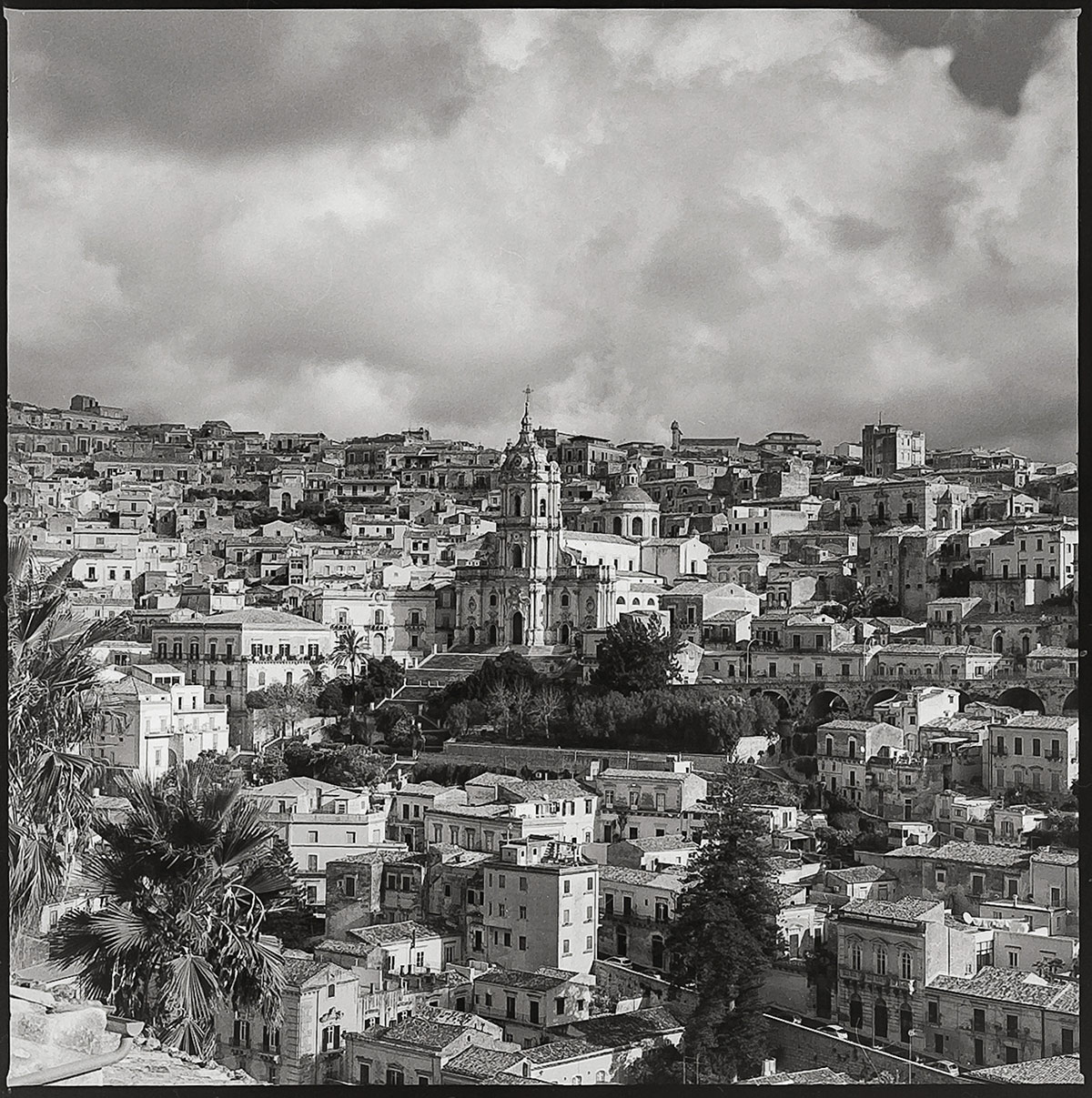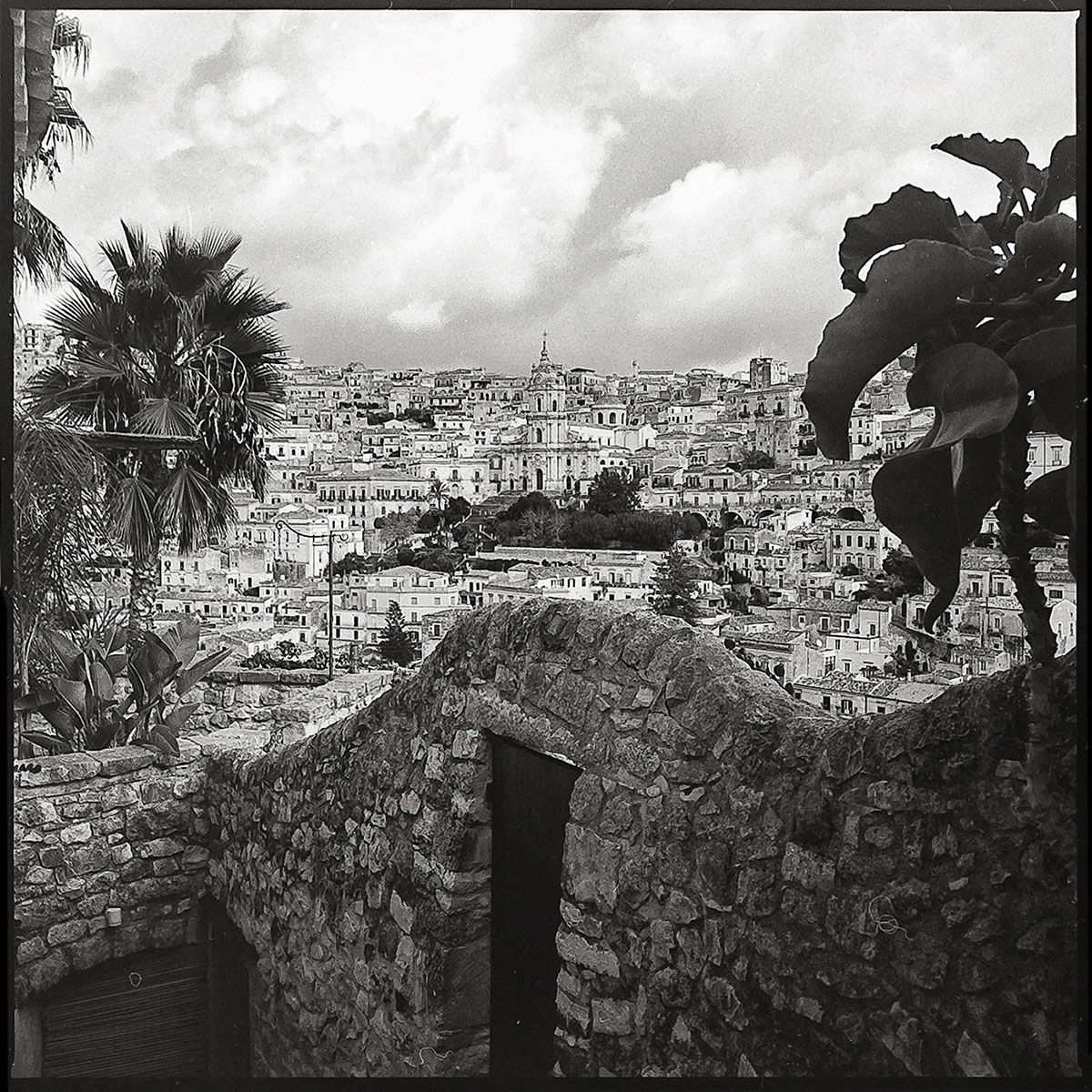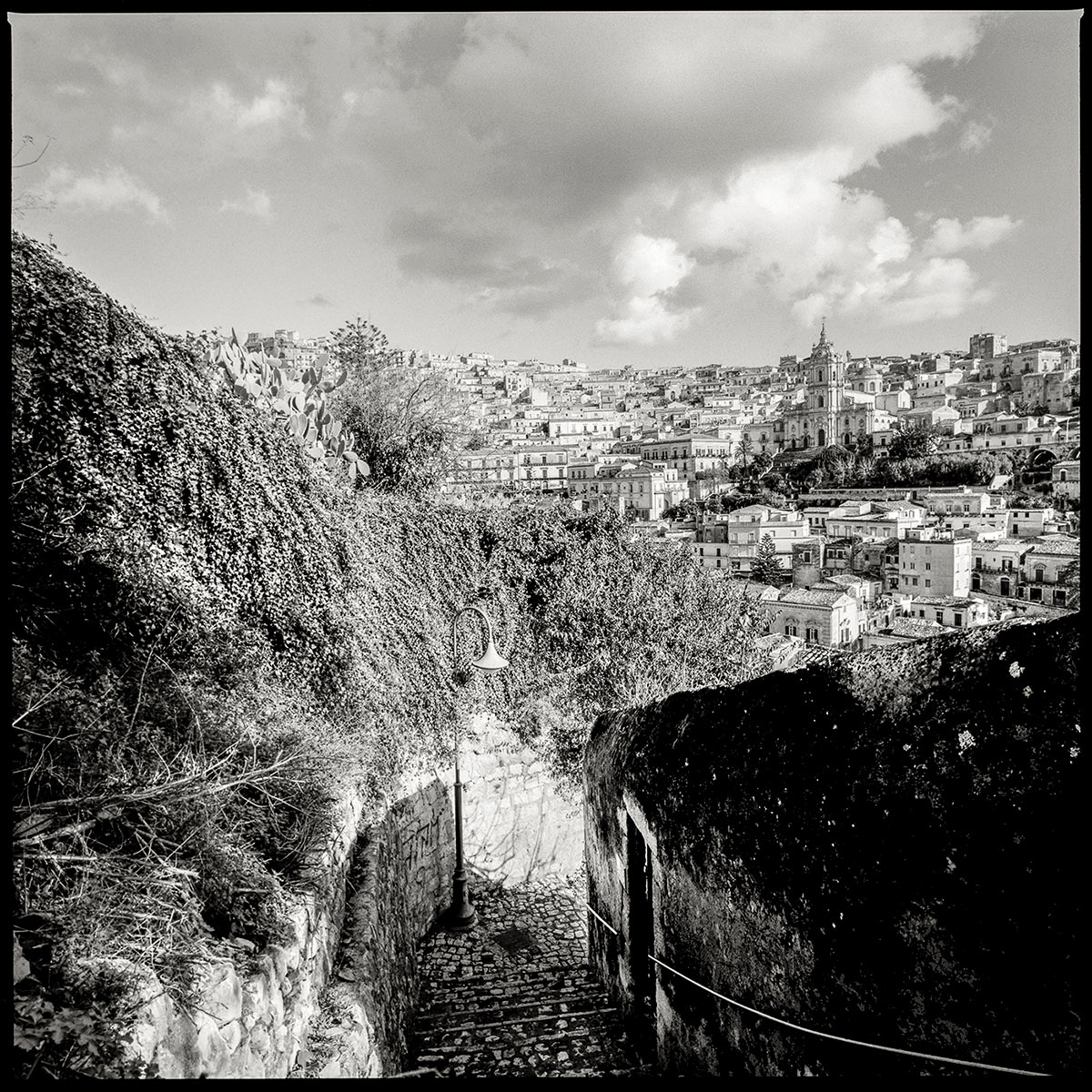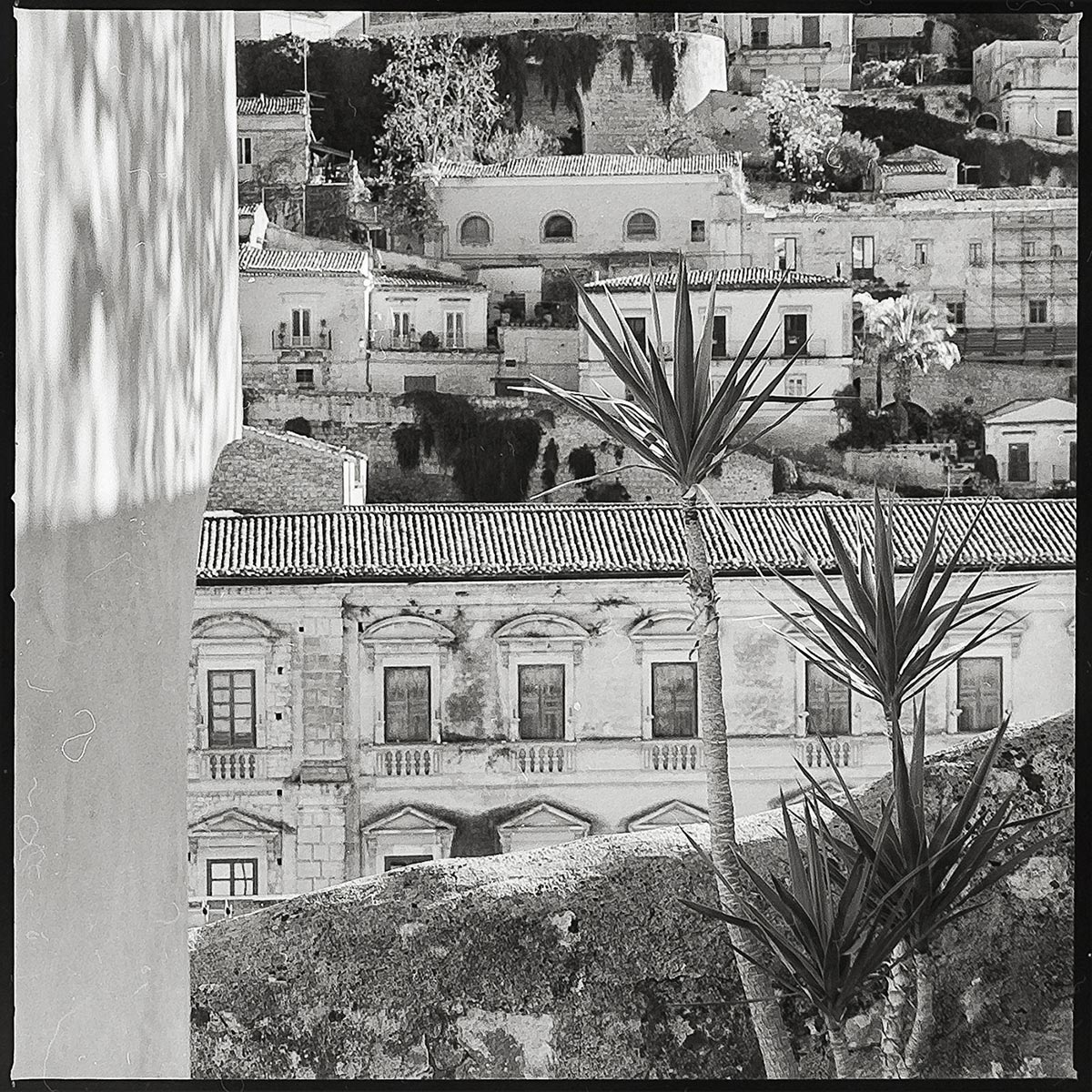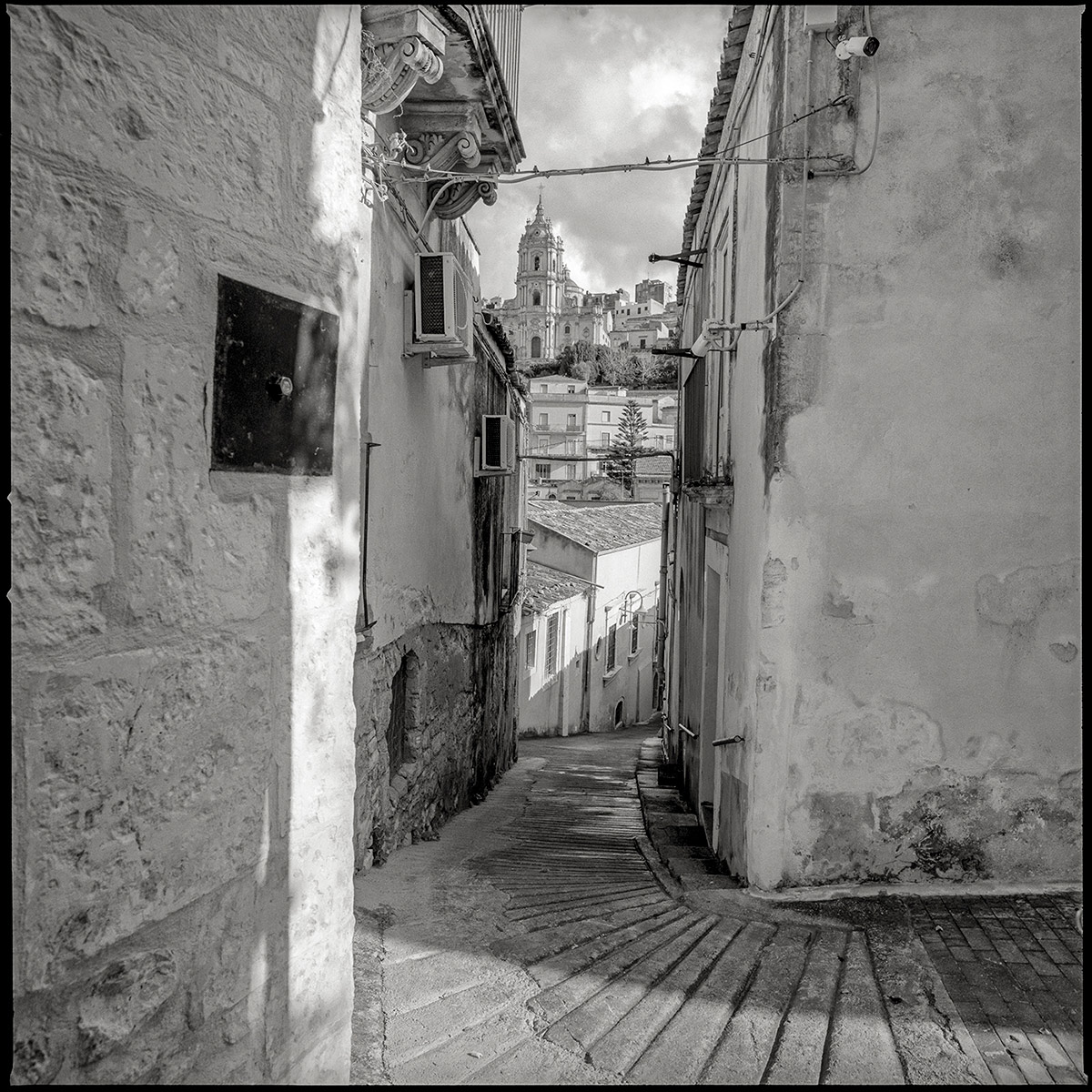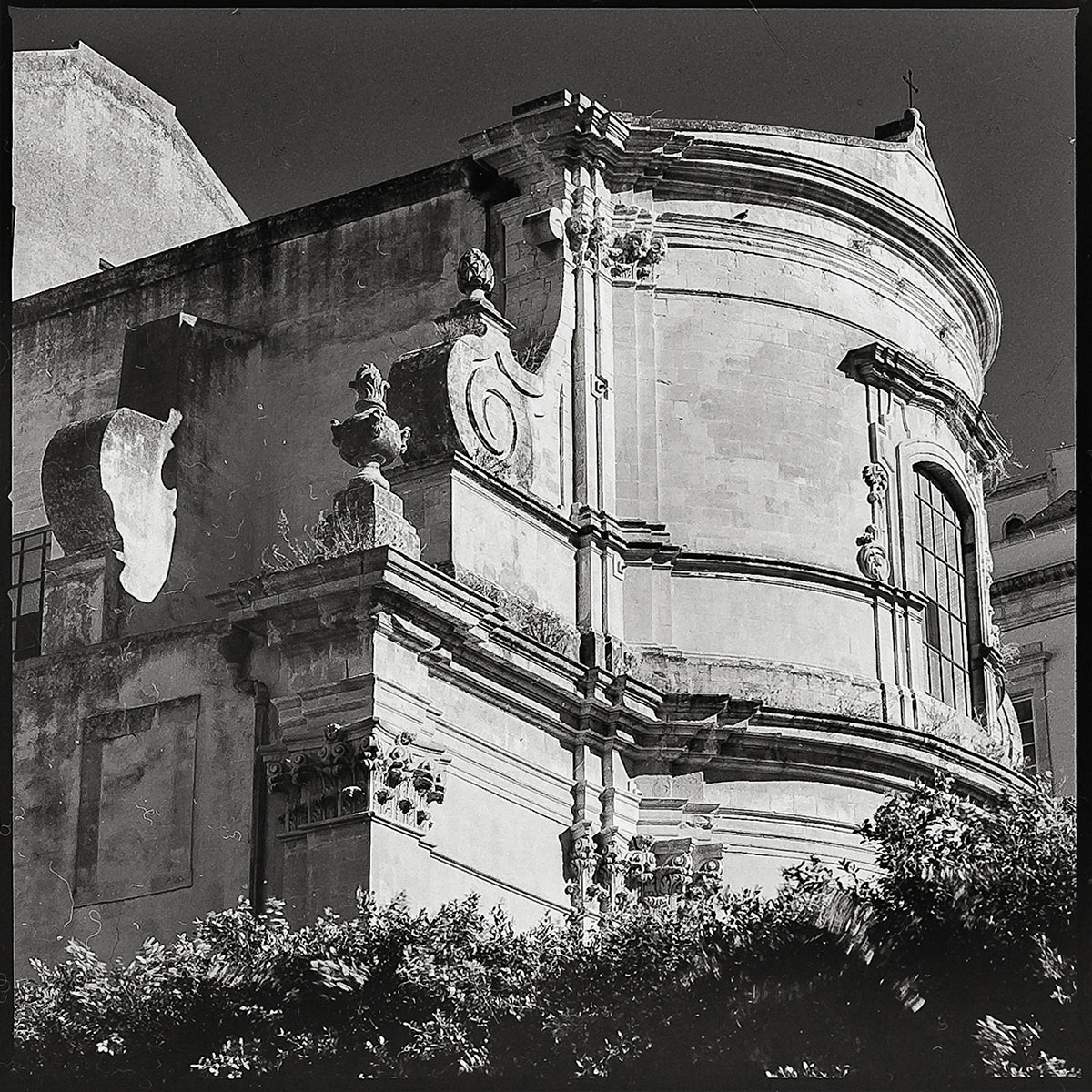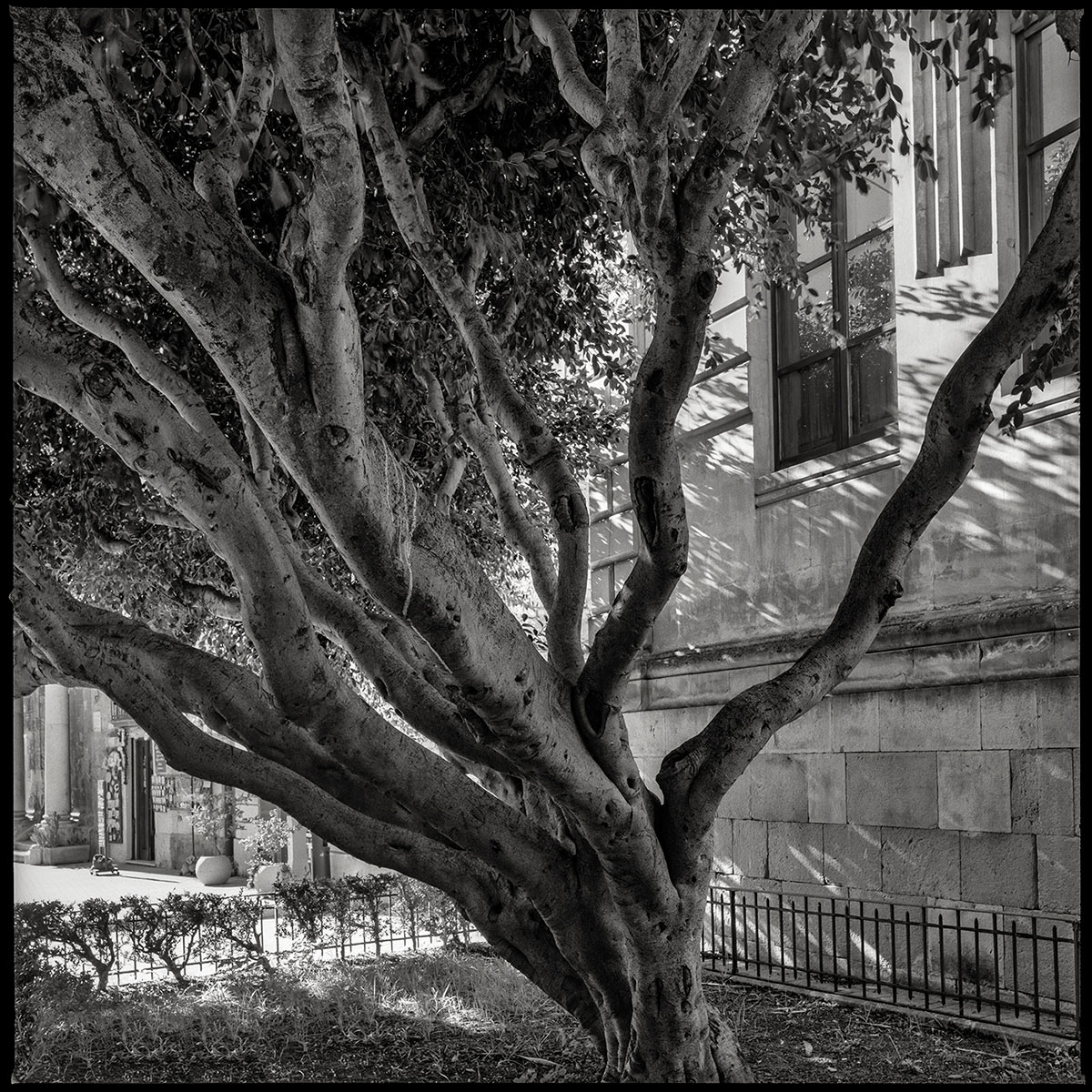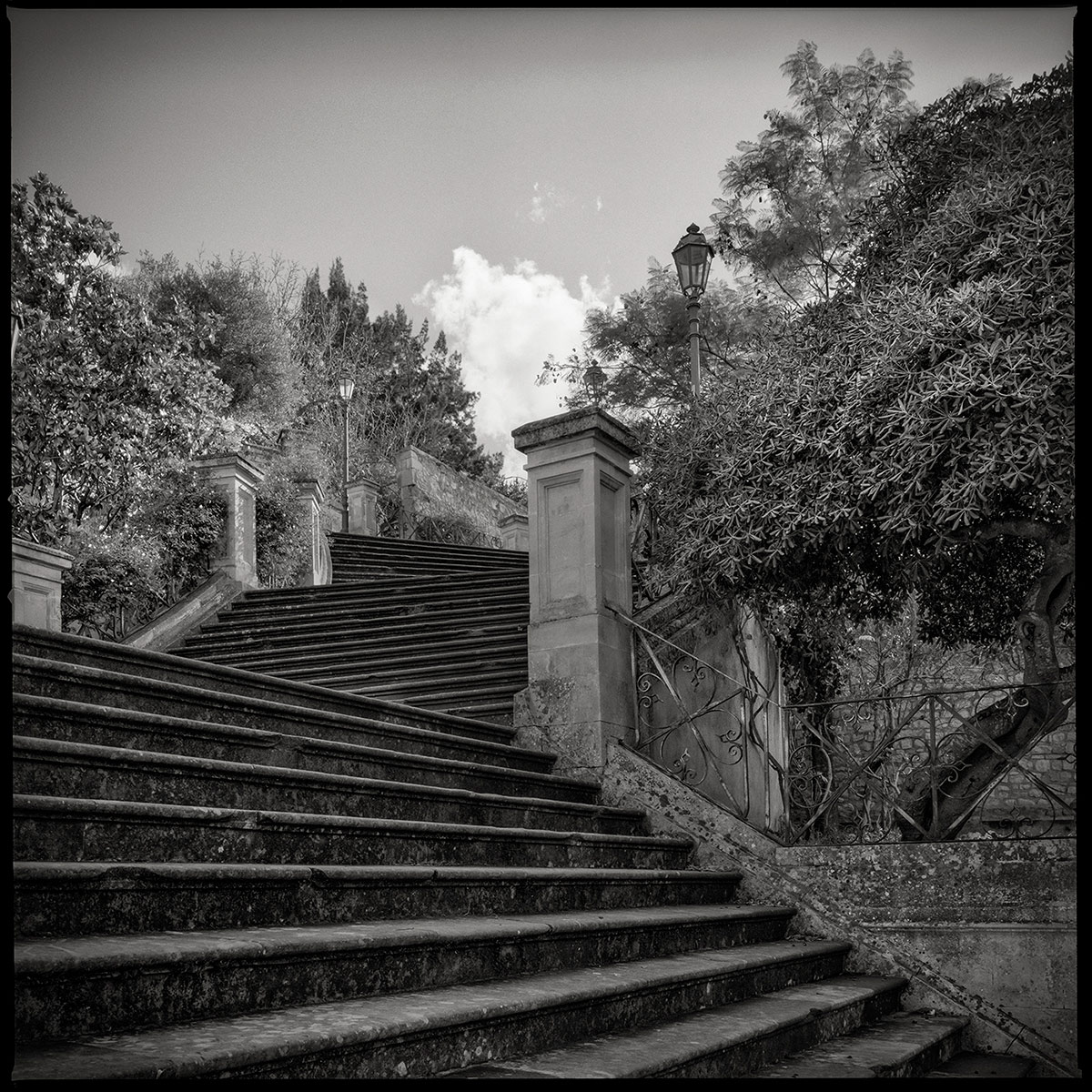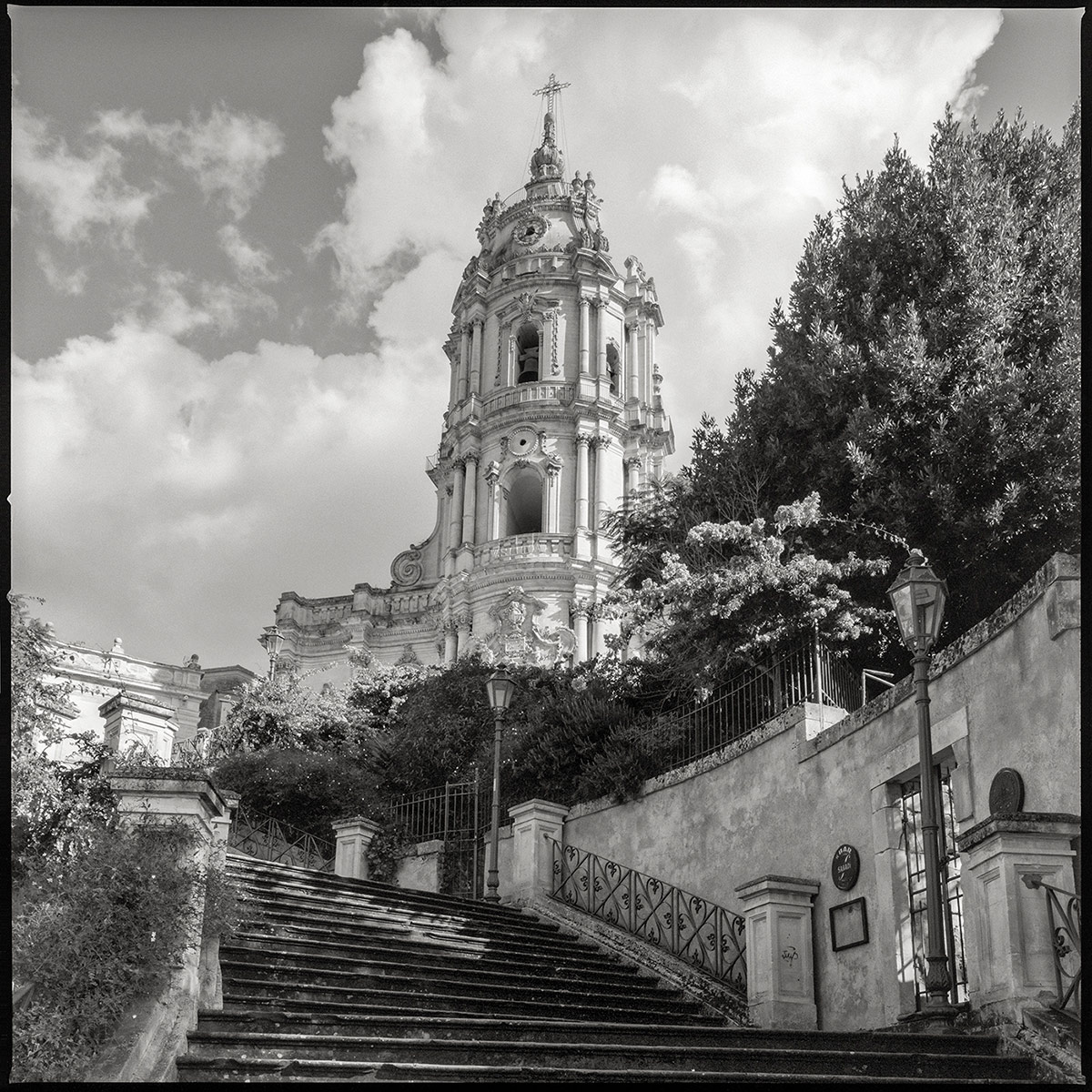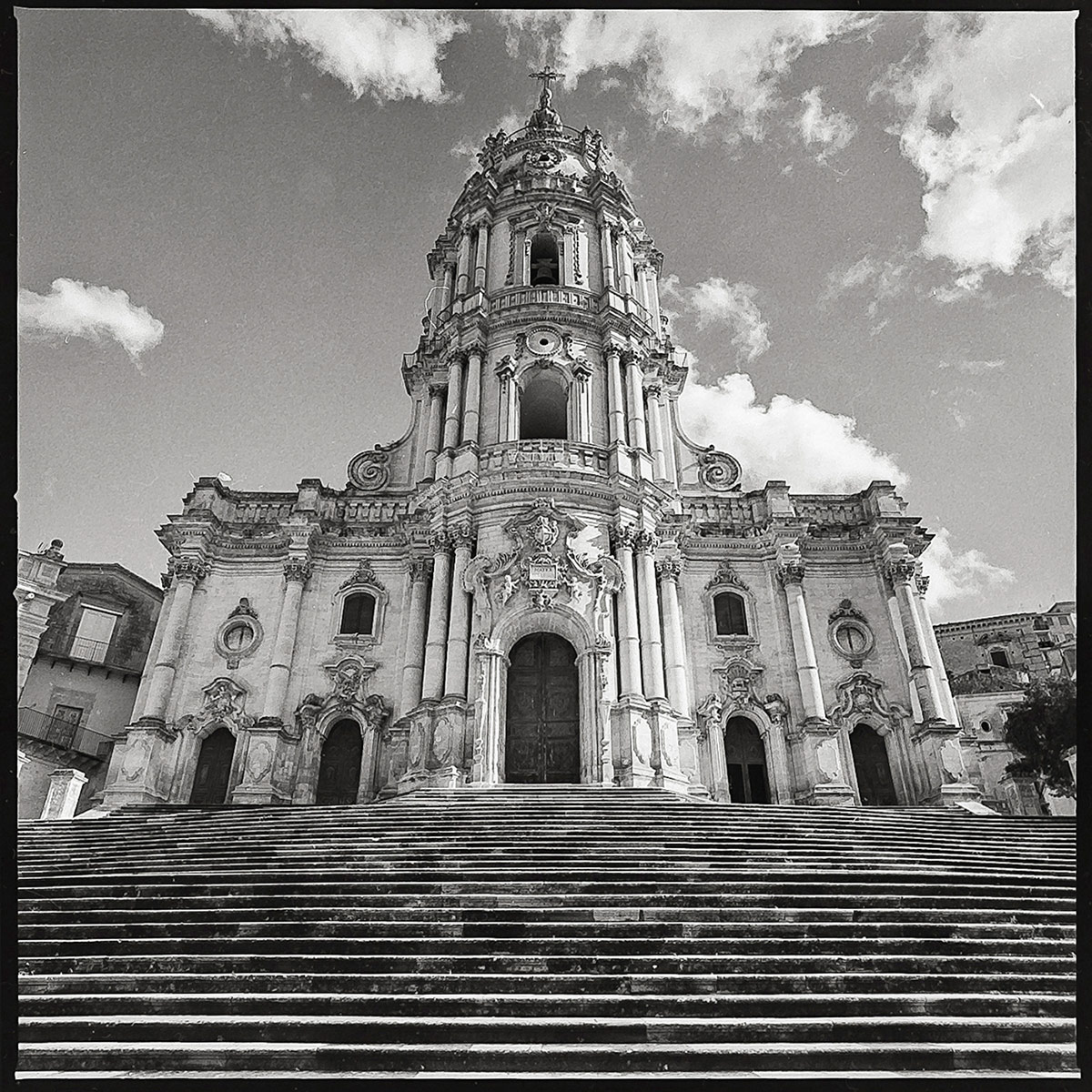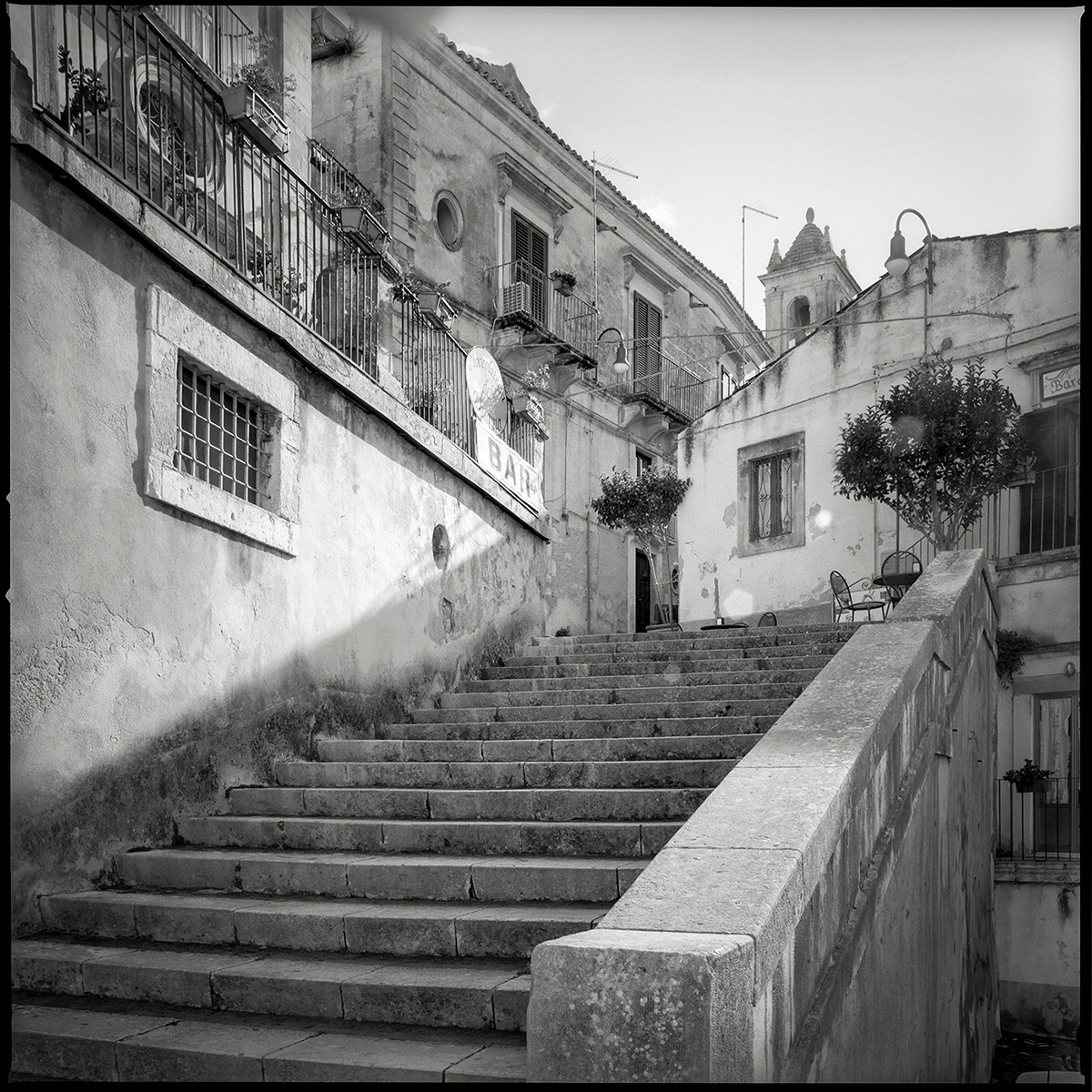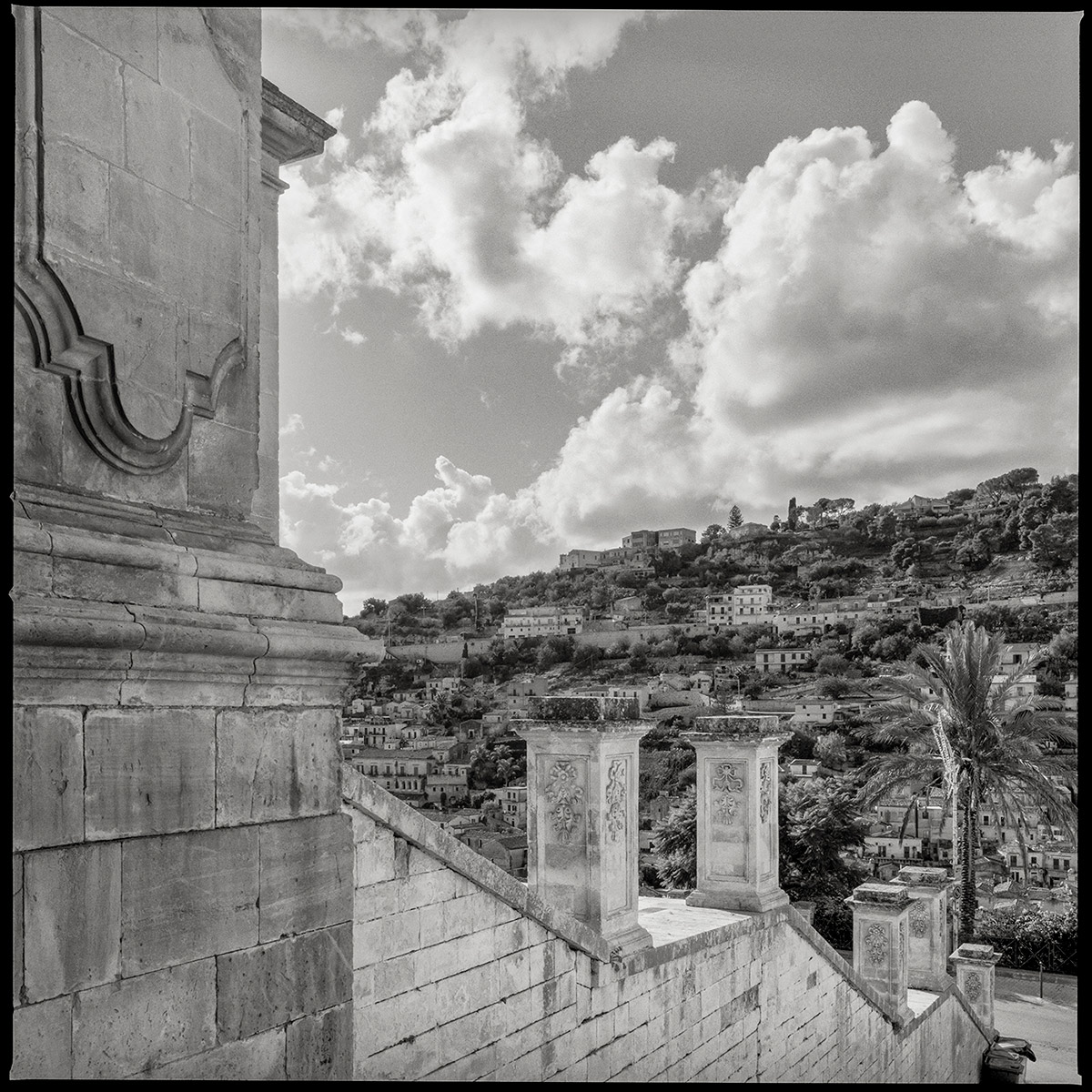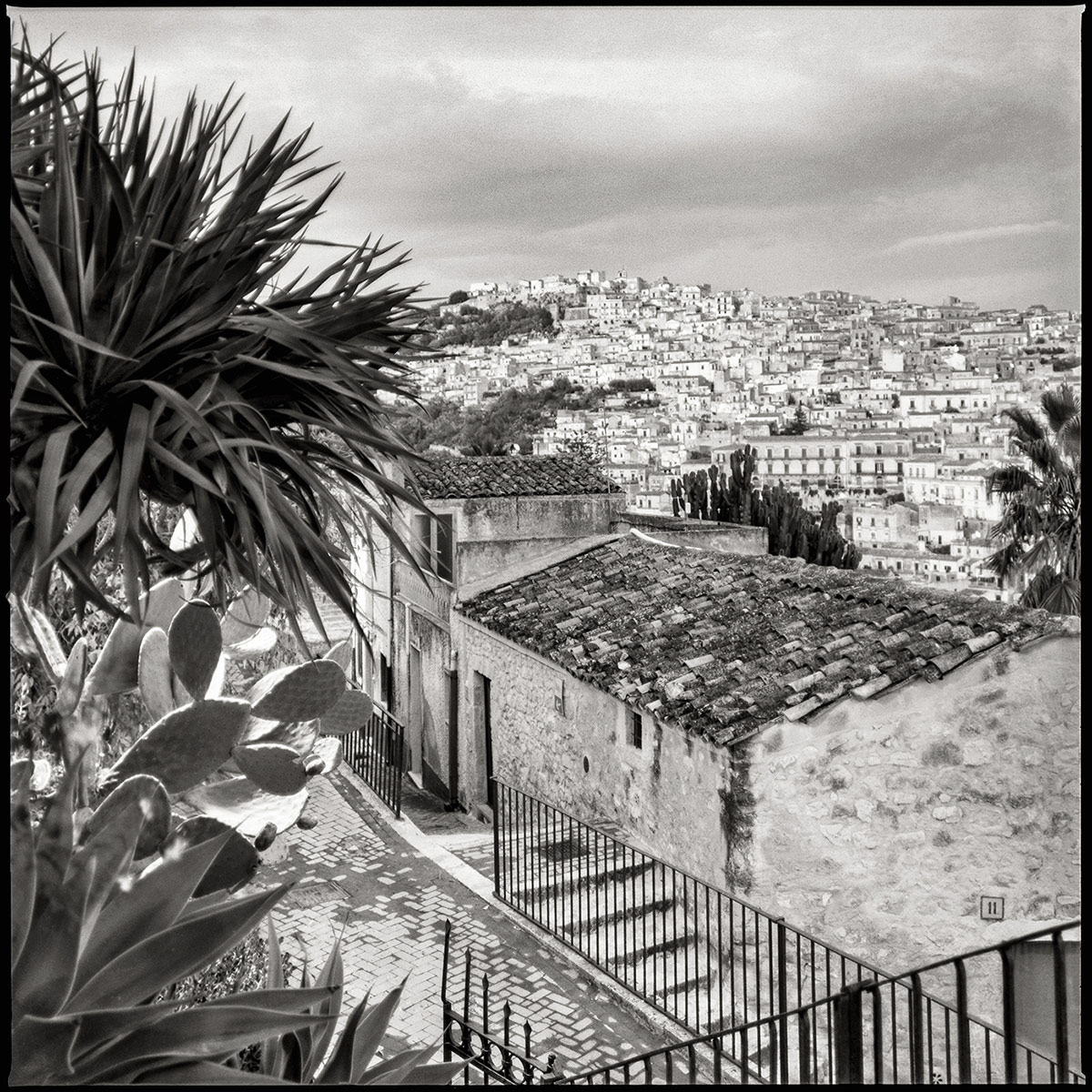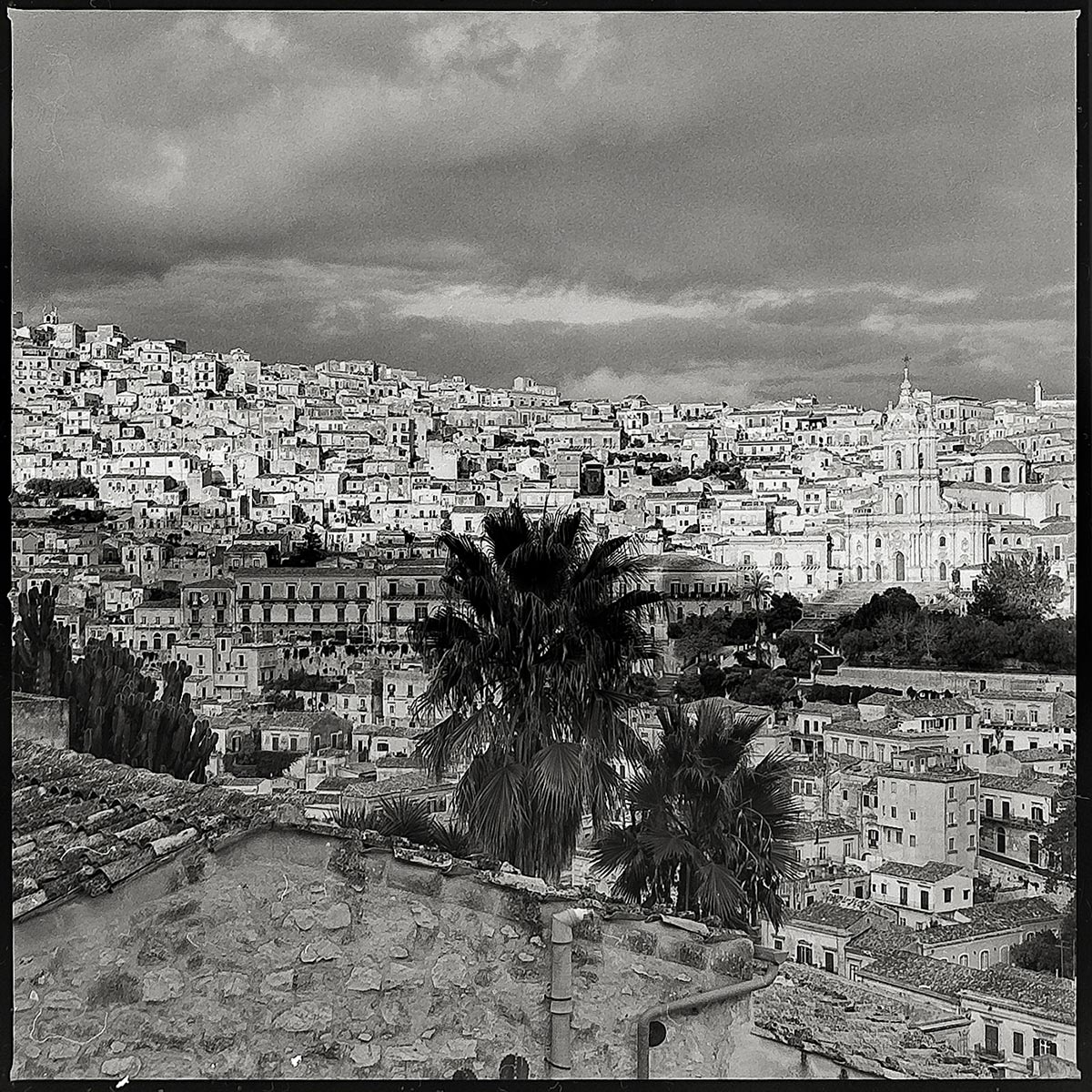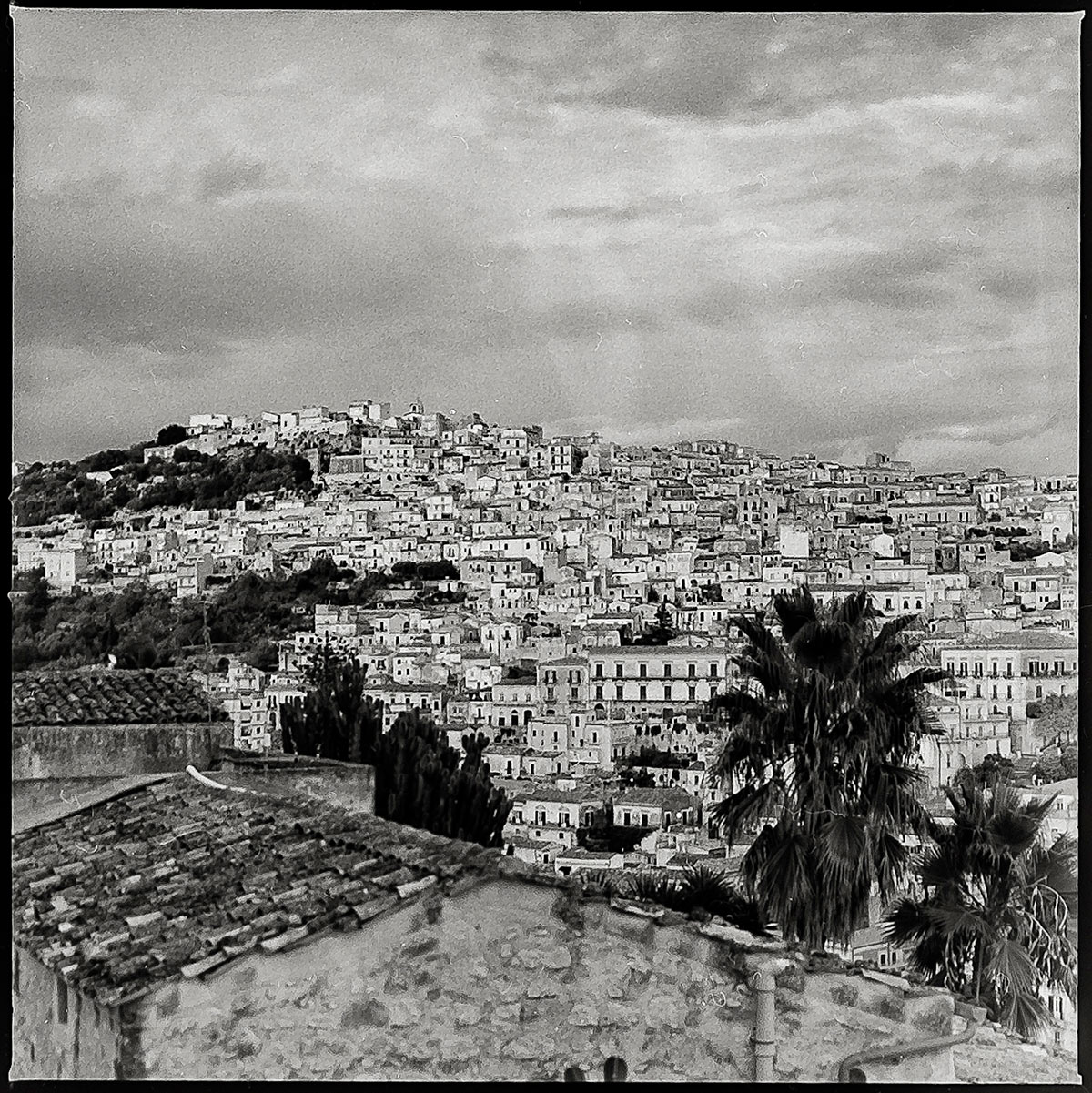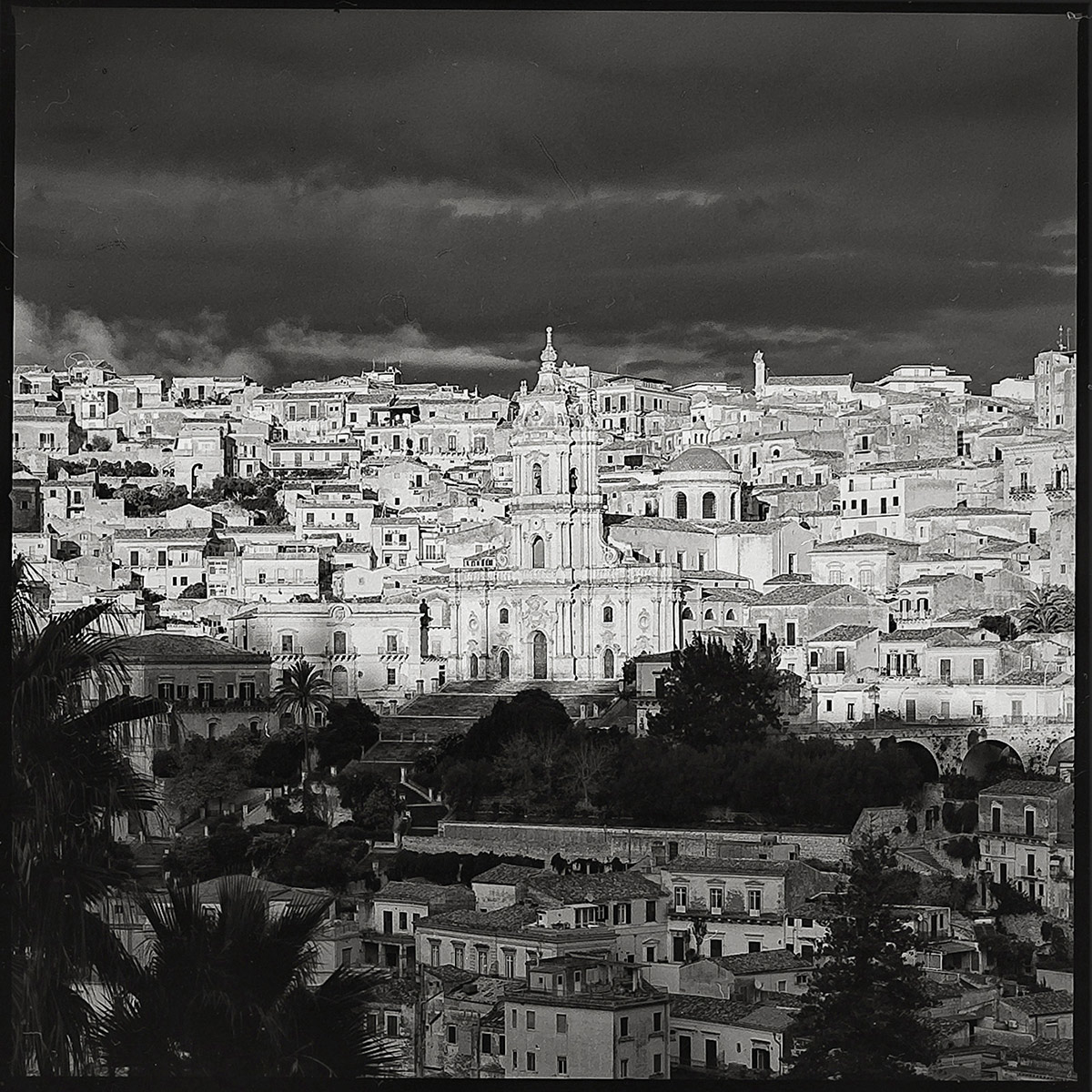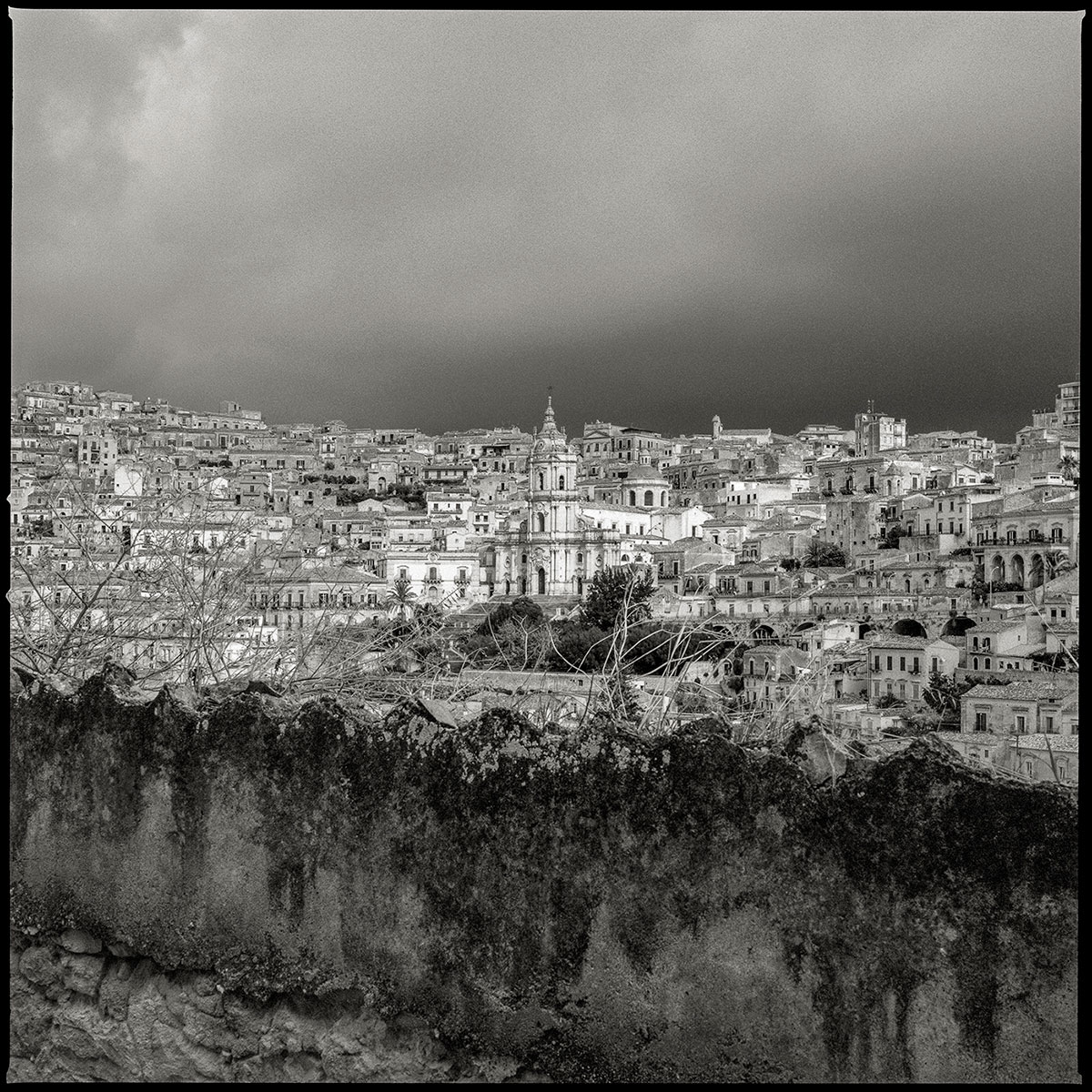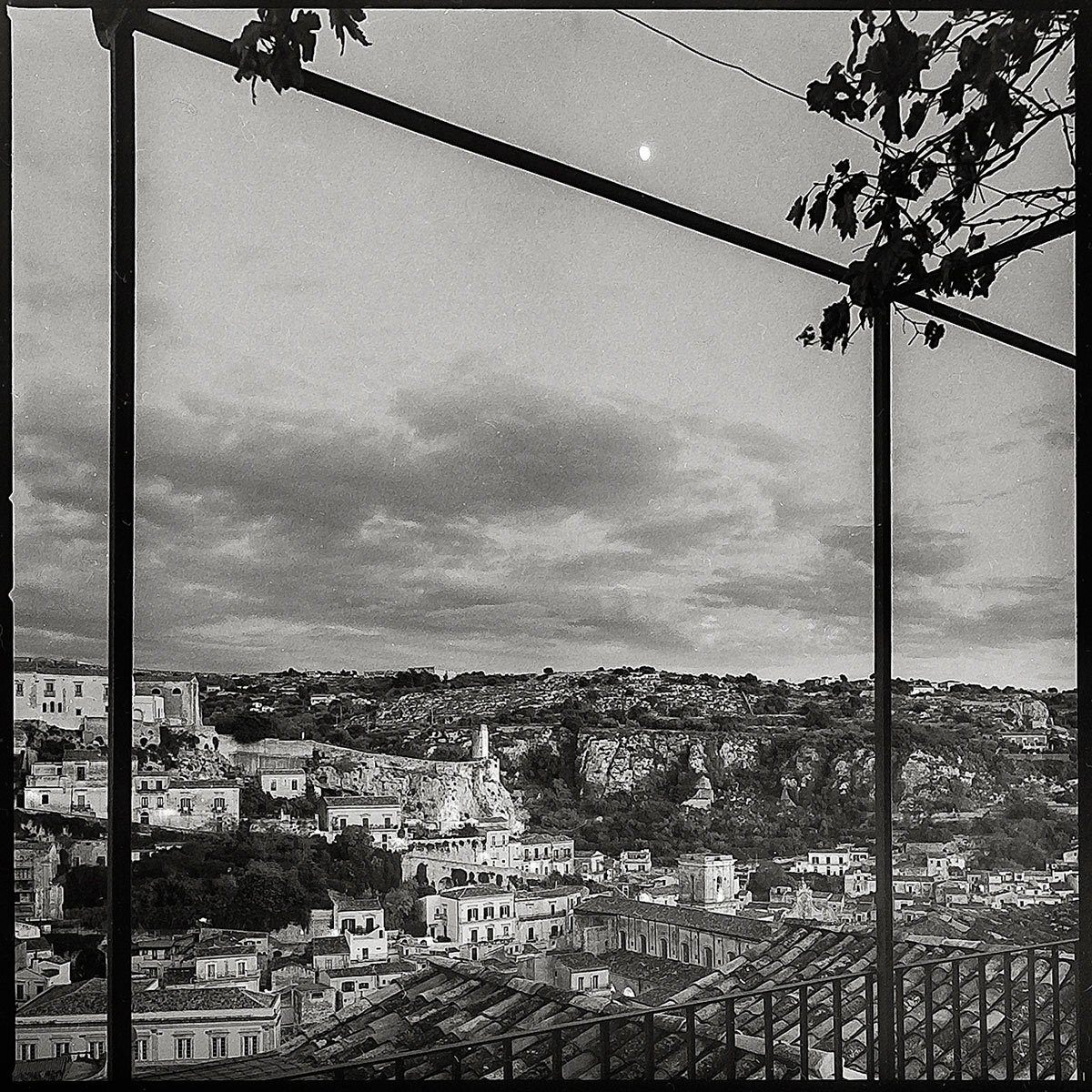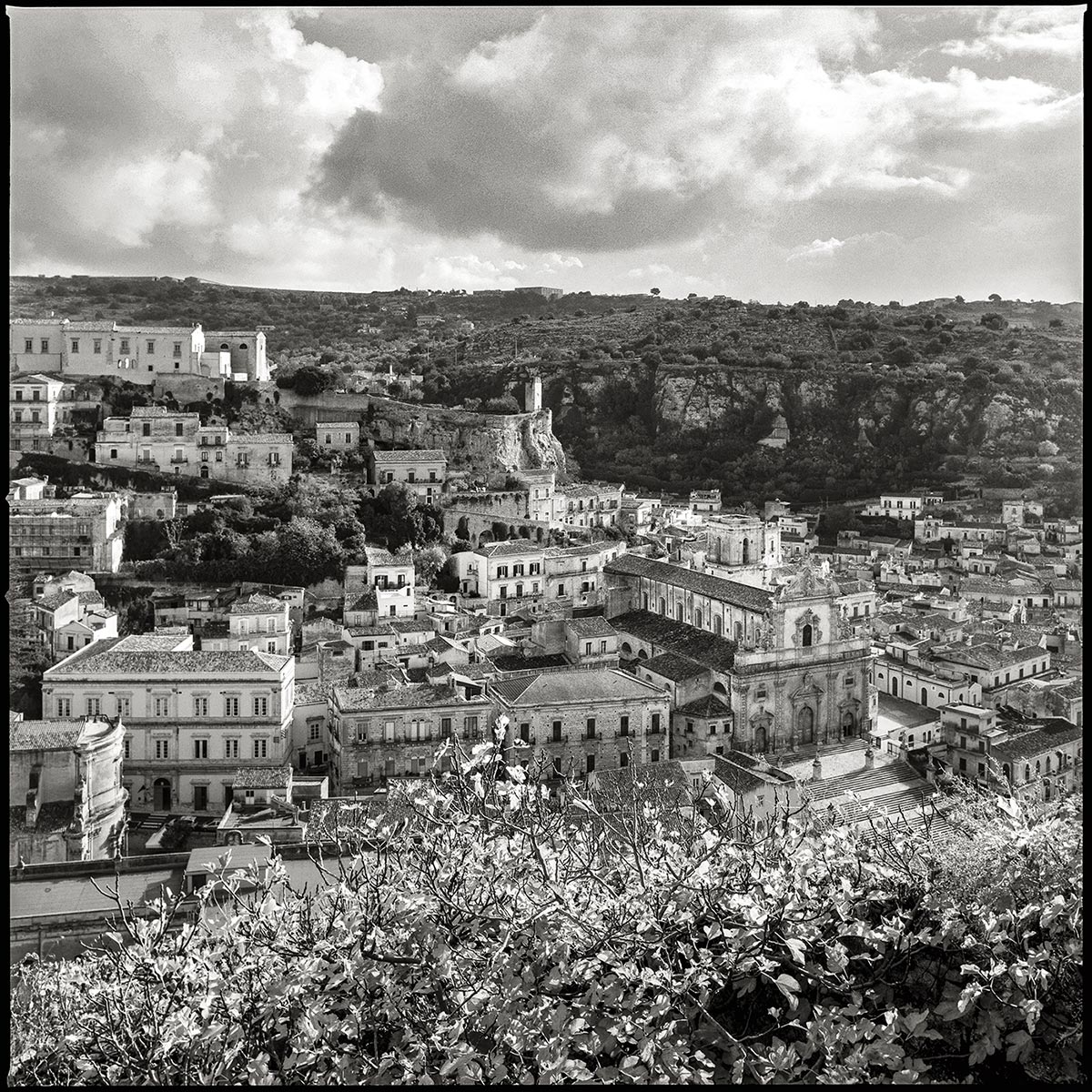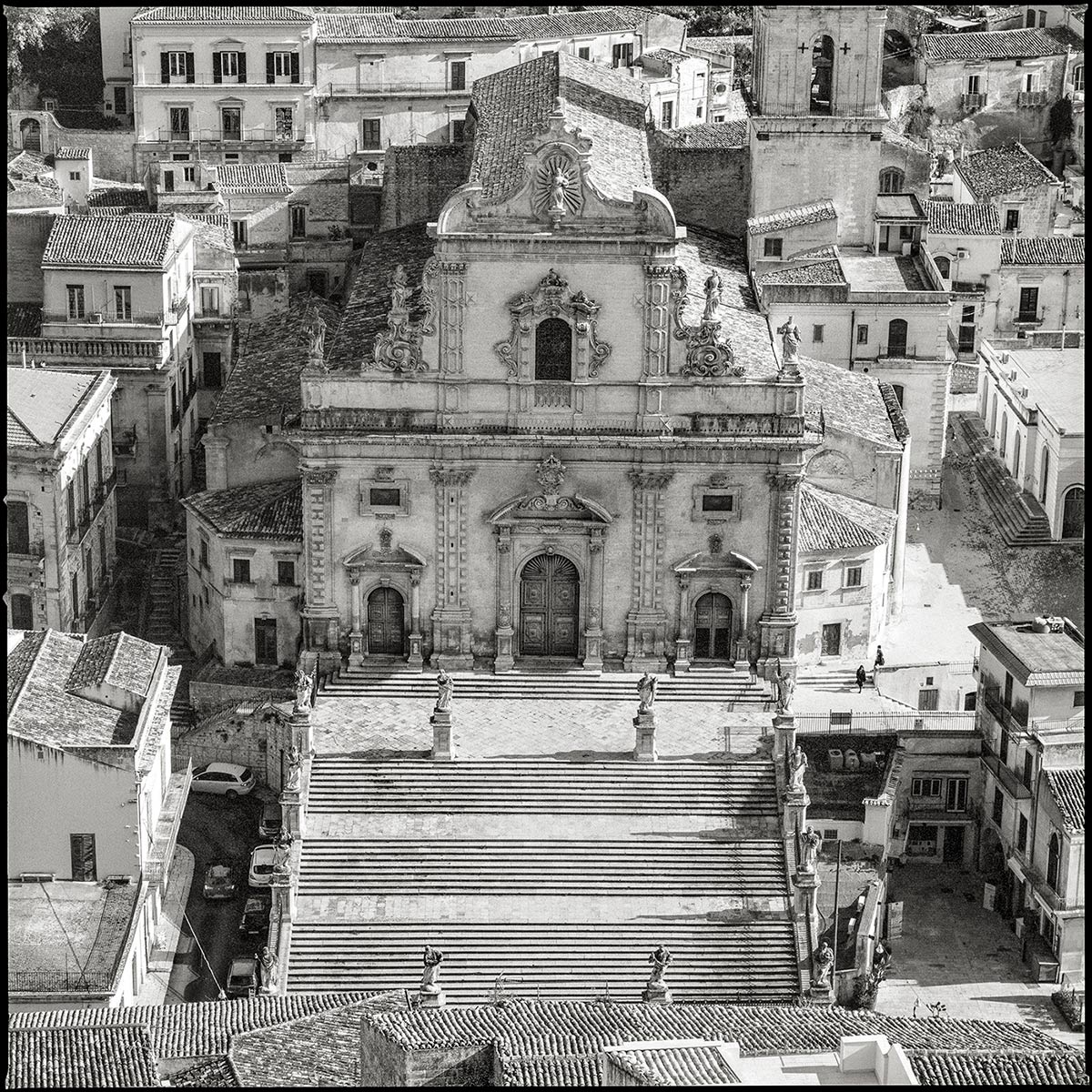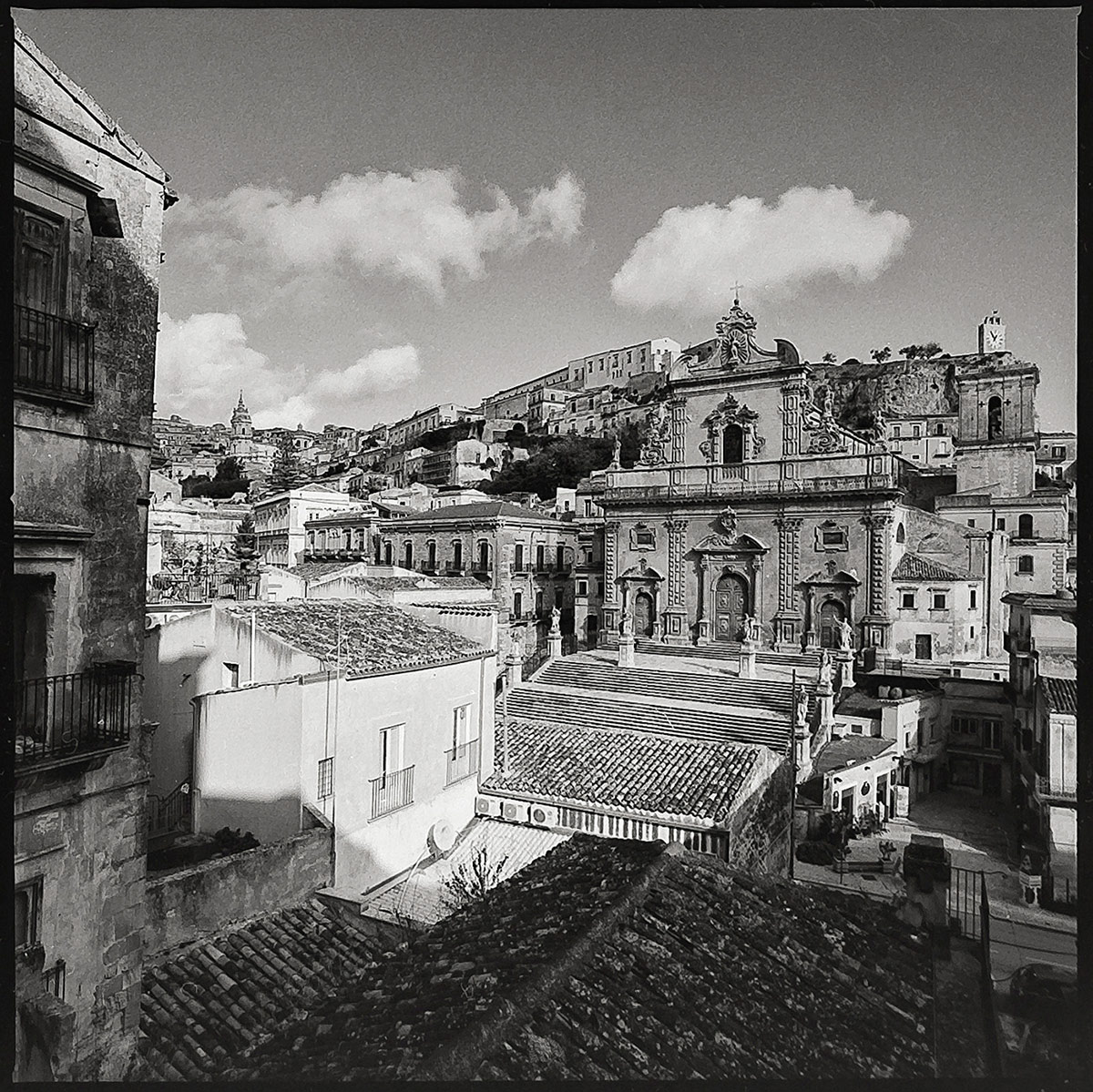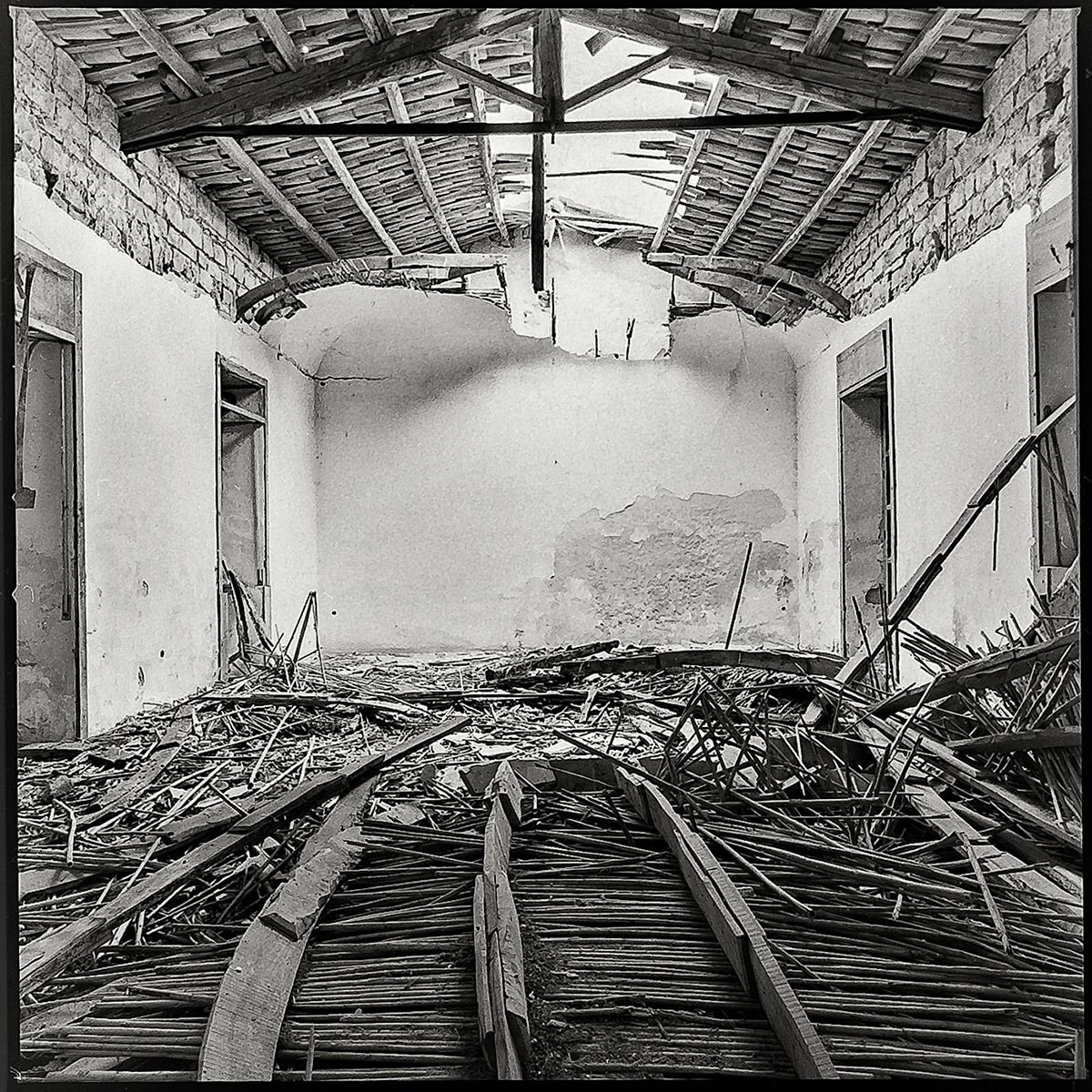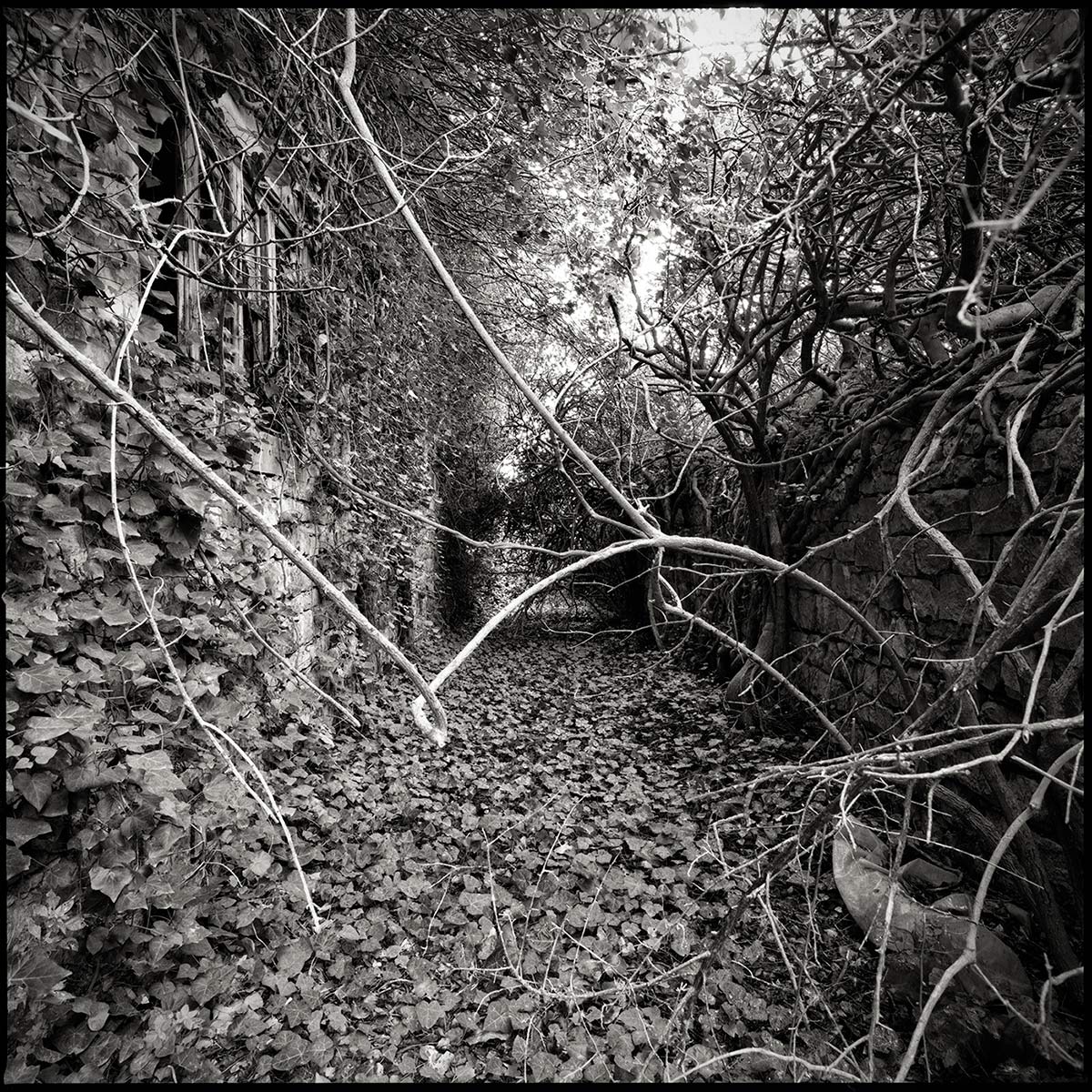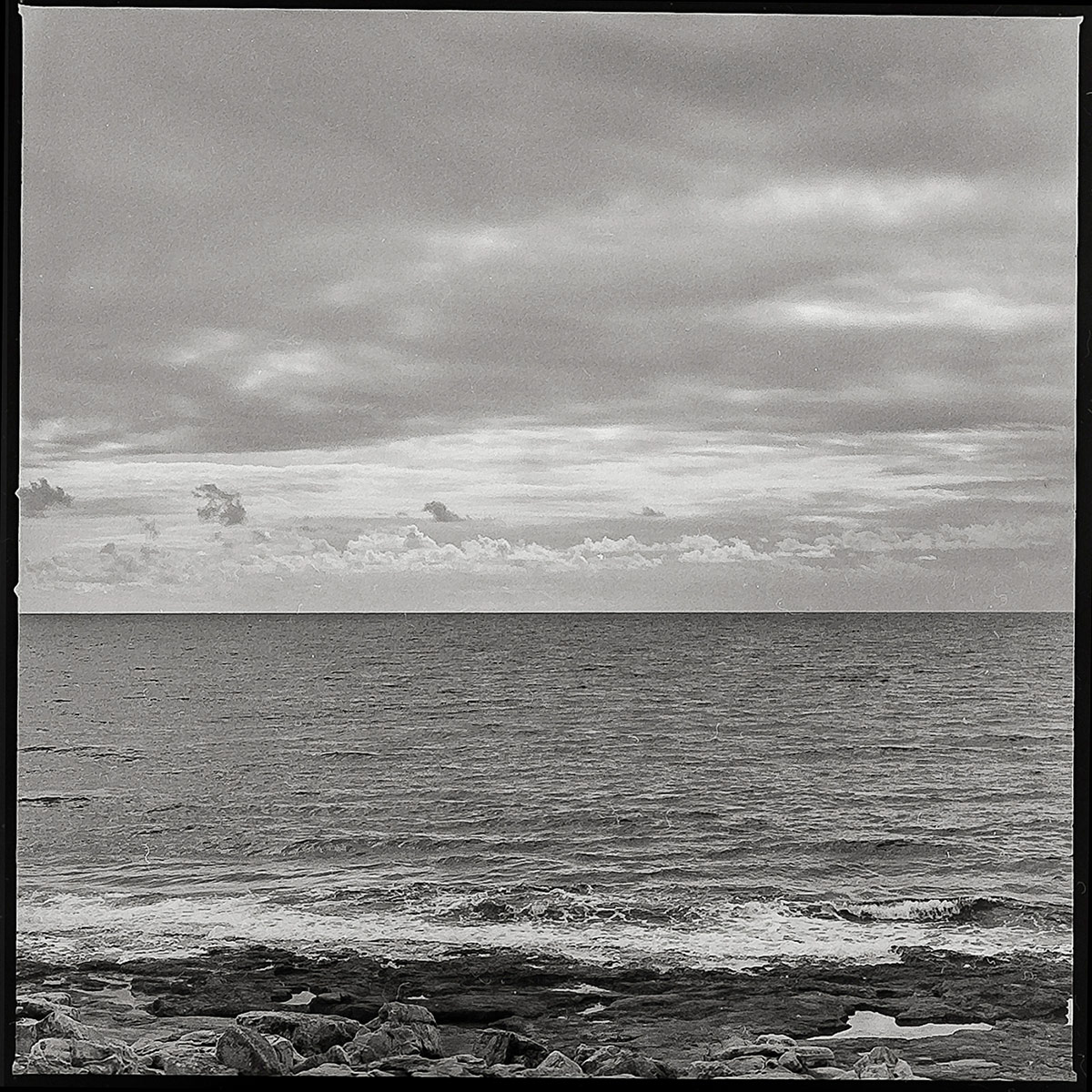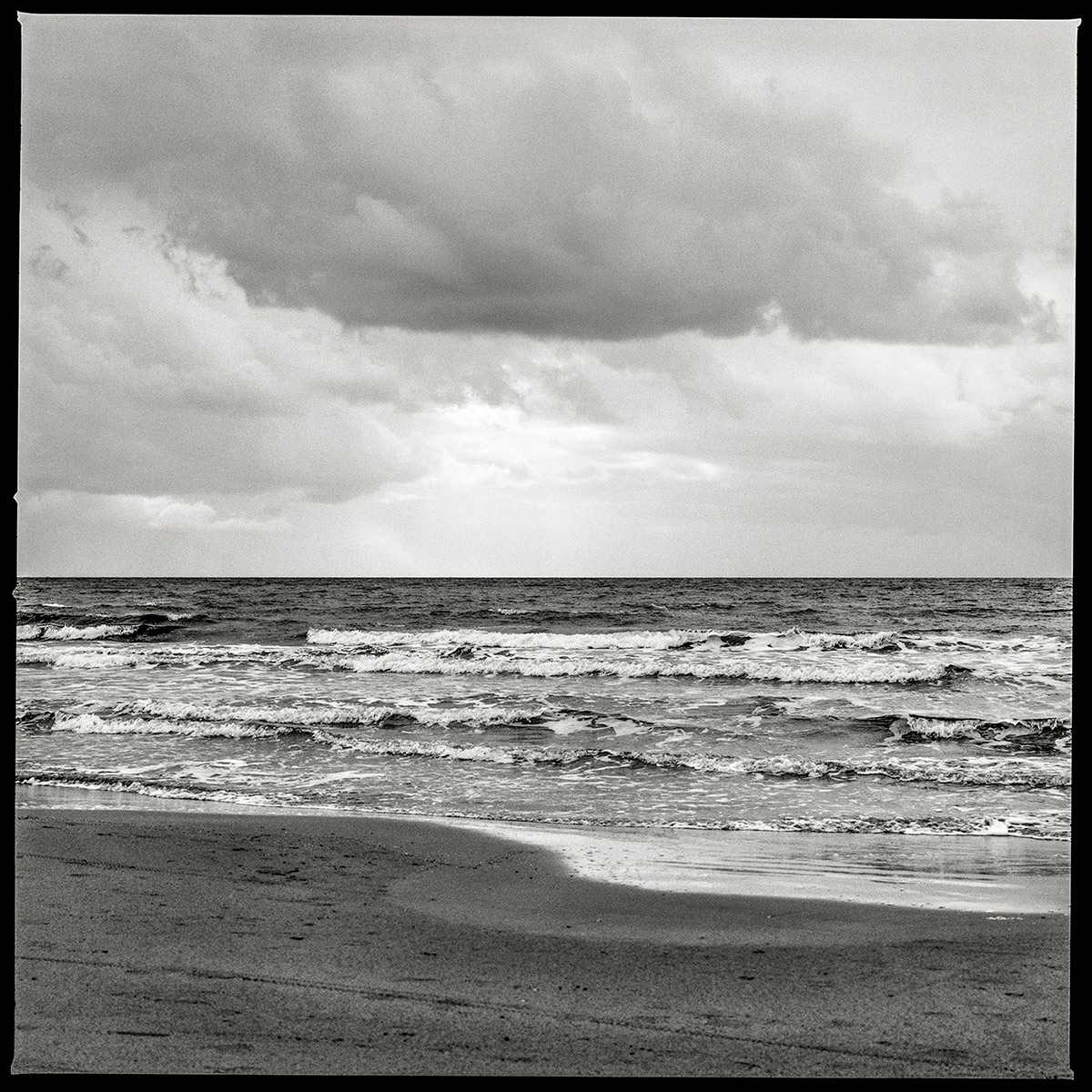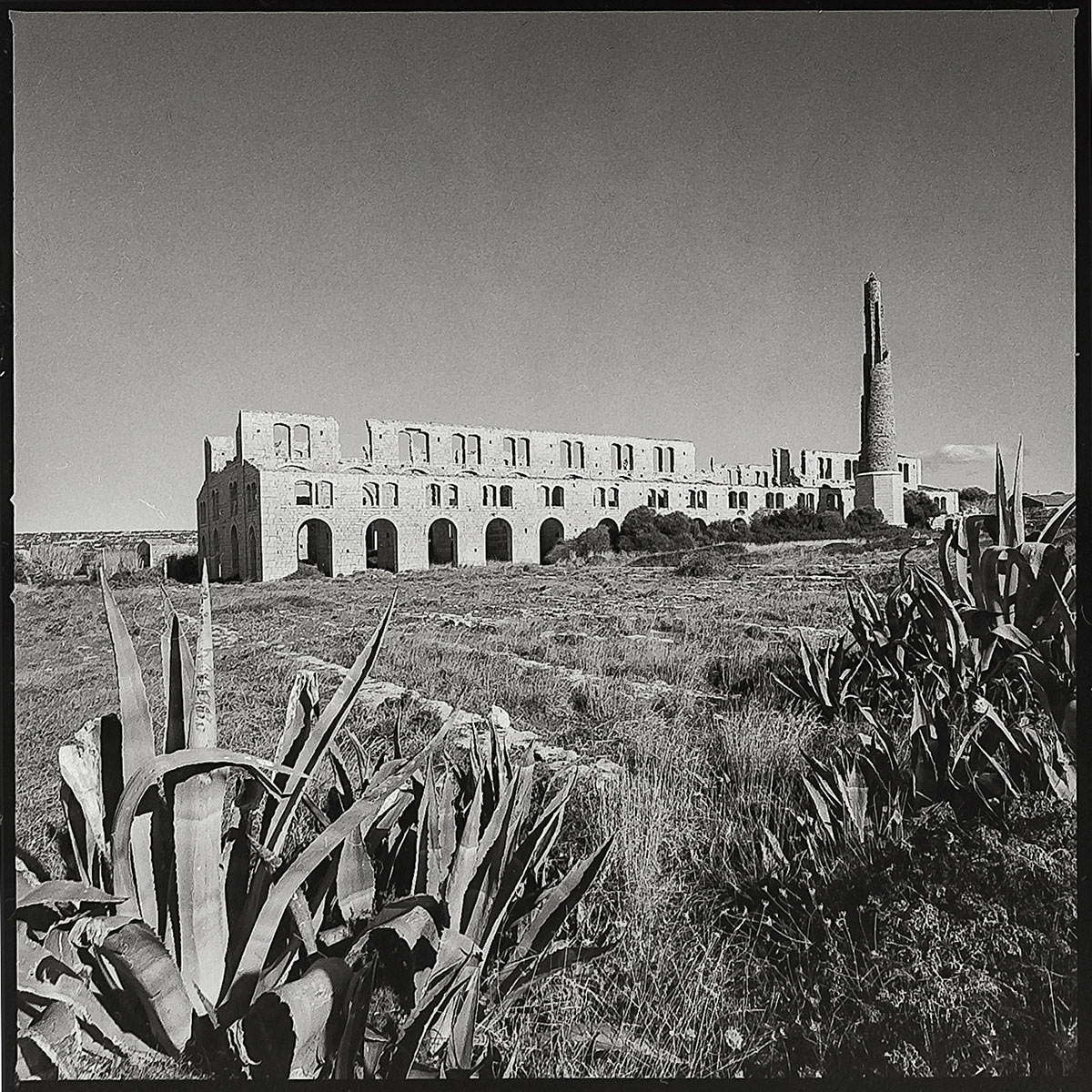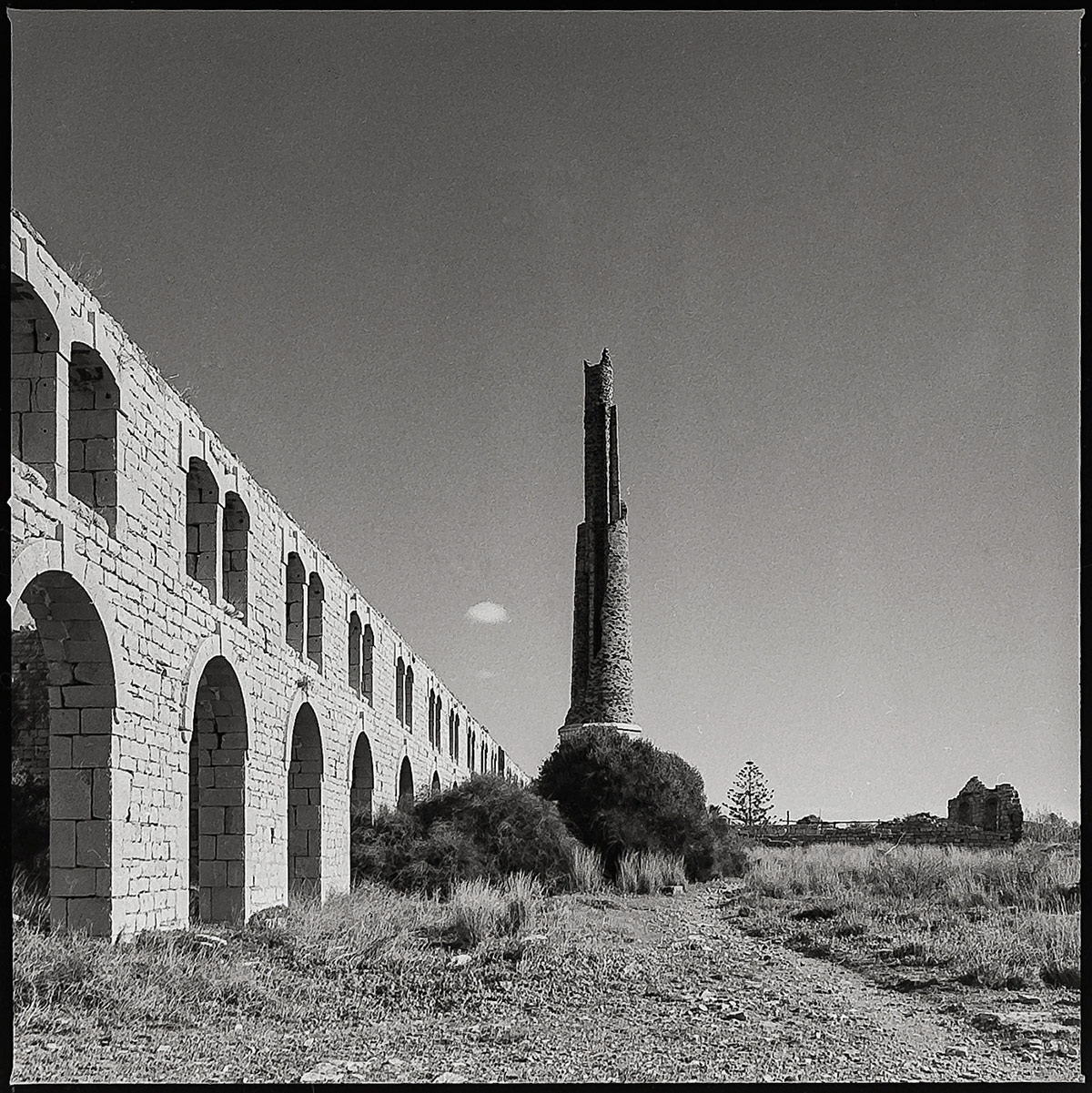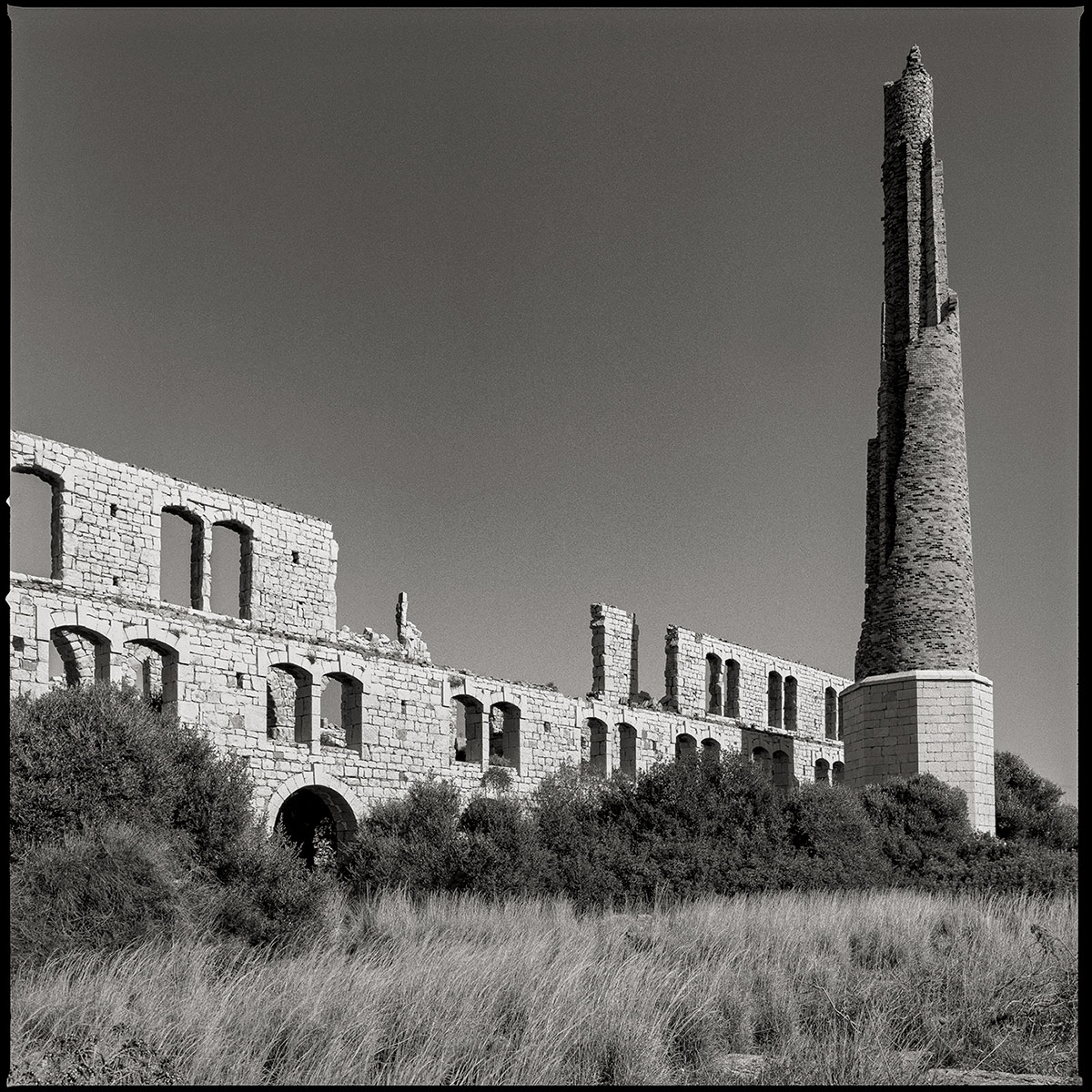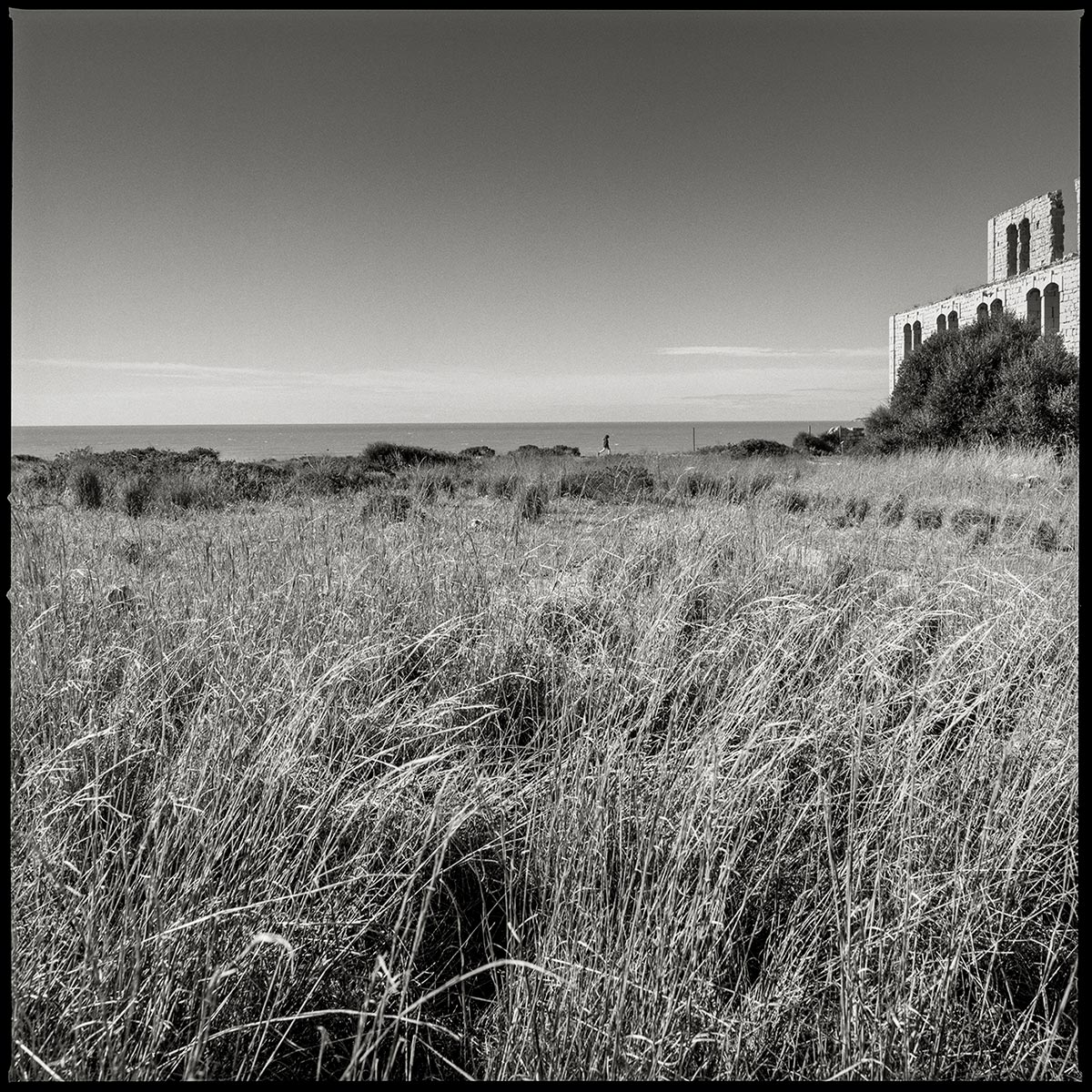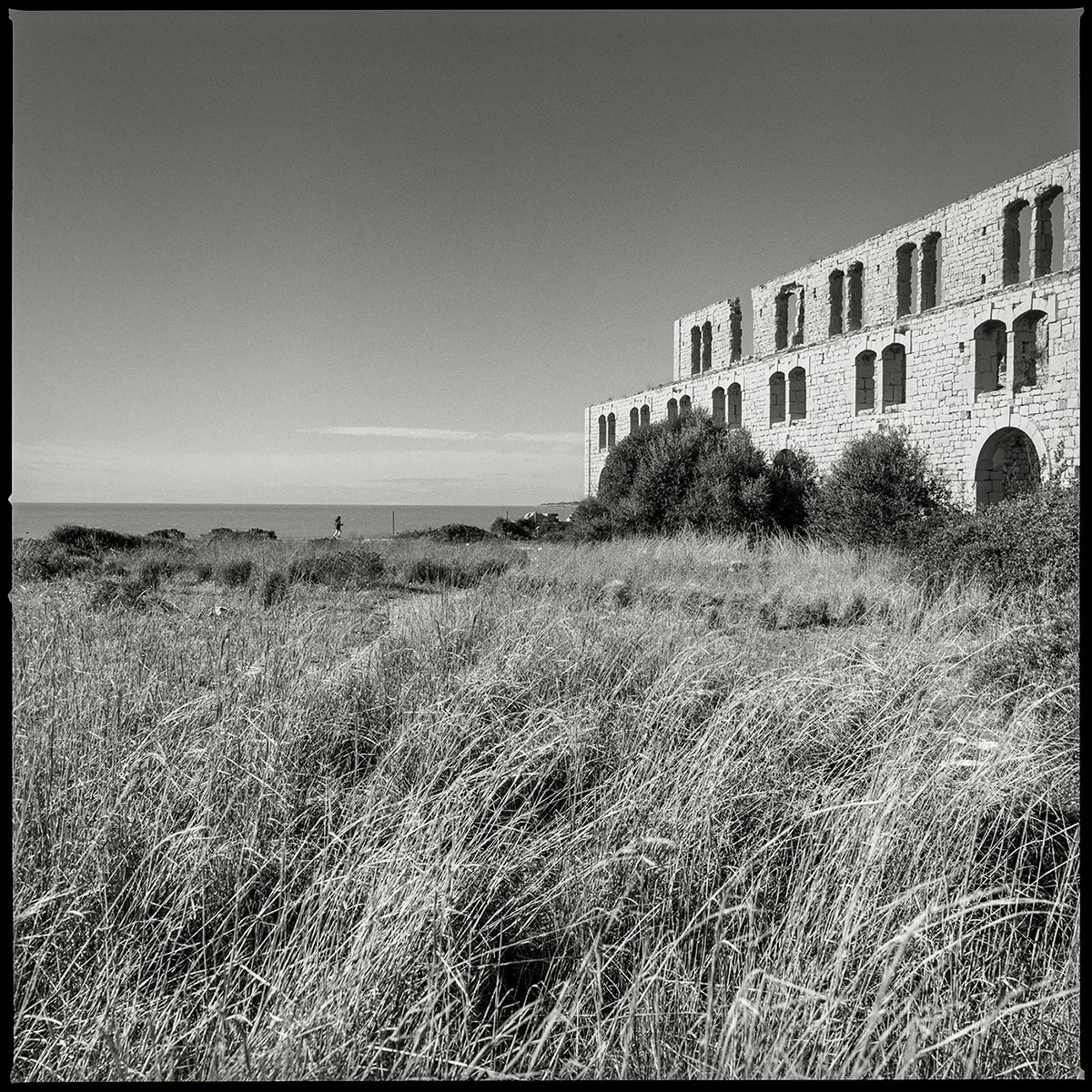
In November 2020, just after the first lock-down of the pendemic, I was in Modica for work, and in addition to my digital equipment I had also brought my analogue one.
I was thus able to walk the streets of the centre of Modica far and wide, up and down, with my Hasselblad, in search of the sensations a pedestrian feels when observing this wonderful city, which seems suspended in time, and was even more so out of season and during the pandemic.
In November, the days are often very windy, the skies laden with clouds: I was fascinated by the light that passes, goes, dazzles and hides, at the mercy of the wind: one instant after another, the same shot gives a different atmosphere, the photographer must be zen, patient, waiting for the right moment.
What struck me, and what I have tried to render, is the formal coherence of the urbanisation, evident in the homogeneity of tones and materials with which the urban design is outlined, looking at it from below, from above, or through glimpses: the historic centre of Modica seen in this way seems unchanged by time.
The former Penna kiln in Sampieri, a symbolic place, a jewel of abandoned architecture, which all the inhabitants of Modica are familiar with, is also suspended in time: every storm causes a piece of it to collapse, but it remains stolid in front of the sea, waiting for a future of protection and enhancement.
So are the many 19th-century villas in the surrounding countryside, revealing their building structures and the layering of colors on the walls, surrounded by vegetation that is literally encompassing them.
All photographs were shot in high-contrast film, and printed Fine-Art with pigment inks on neutral pH cotton paper, with a warm tone, to convey the warmth and light of this place.
The fine-art prints on cotton paper that I made are in Open Edition.
Nel mese di novembre del 2020, appena dopo il primo lock-down della pendemia, ero a Modica per lavoro, e oltre all’attrezzatura digitale avevo portato anche quella analogica.
Ho così potuto percorrere le strade del centro di Modica in lungo e in largo, in su e in giù, con la mia Hasselblad, alla ricerca delle sensazioni che prova un pedone osservando questa città meravigliosa, che sembra sospesa nel tempo, e lo era ancora di più fuori stagione e durante la pandemia.
A novembre le giornate sono spesso molto ventose, i cieli carichi di nubi: sono stato affascinato dalla luce che passa, va, abbacina e si cela, in balìa del vento: un istante dopo l’altro la stessa inquadratura restituisce un’atmosfera diversa, il fotografo deve essere zen, paziente, aspettare il momento giusto.
Quello che mi ha colpito, e che ho cercato di restituire, è la coerenza formale dell’urbanizzazione, evidente dall’omogeneità di toni e materiali con cui il disegno urbano si delinea guardandolo dal basso, dall’alto, o attraverso scorci: il centro storico di Modica visto così sempra immutato nel tempo.
La ex fornace Penna di Sampieri, un luogo simbolico, un gioiello di architettura in abbandono, che tutti gli abitanti di Modica conoscono bene, è anch’essa sospesa nel tempo: ogni tempesta ne fa crollare un pezzetto, ma rimane stolida di fronte al mare, in attesa di un futuro di tutela e valorizzazione.
Così come le numerose ville ottocentesche nelle campagne limitrofe, che rivelano le loro strutture costruttive e lo stratificarsi dei colori sui muri, circondate da vegetazione che le sta letteralmente inglobando.
Tutte le fotografie sono state scattate in pellicola con un elevato contrasto, e stampate Fine-Art con inchiostri ai pigmenti su carta cotone a ph neutro, con un tono caldo, per restituire il calore e la luce di questo luogo.
Le stampe fine-art su carta cotone che ho realizzato sono in Open Edition.

